32 tips for taking care of a large-breed cat
Here's everything you need to know about taking care of a large-breed cat.
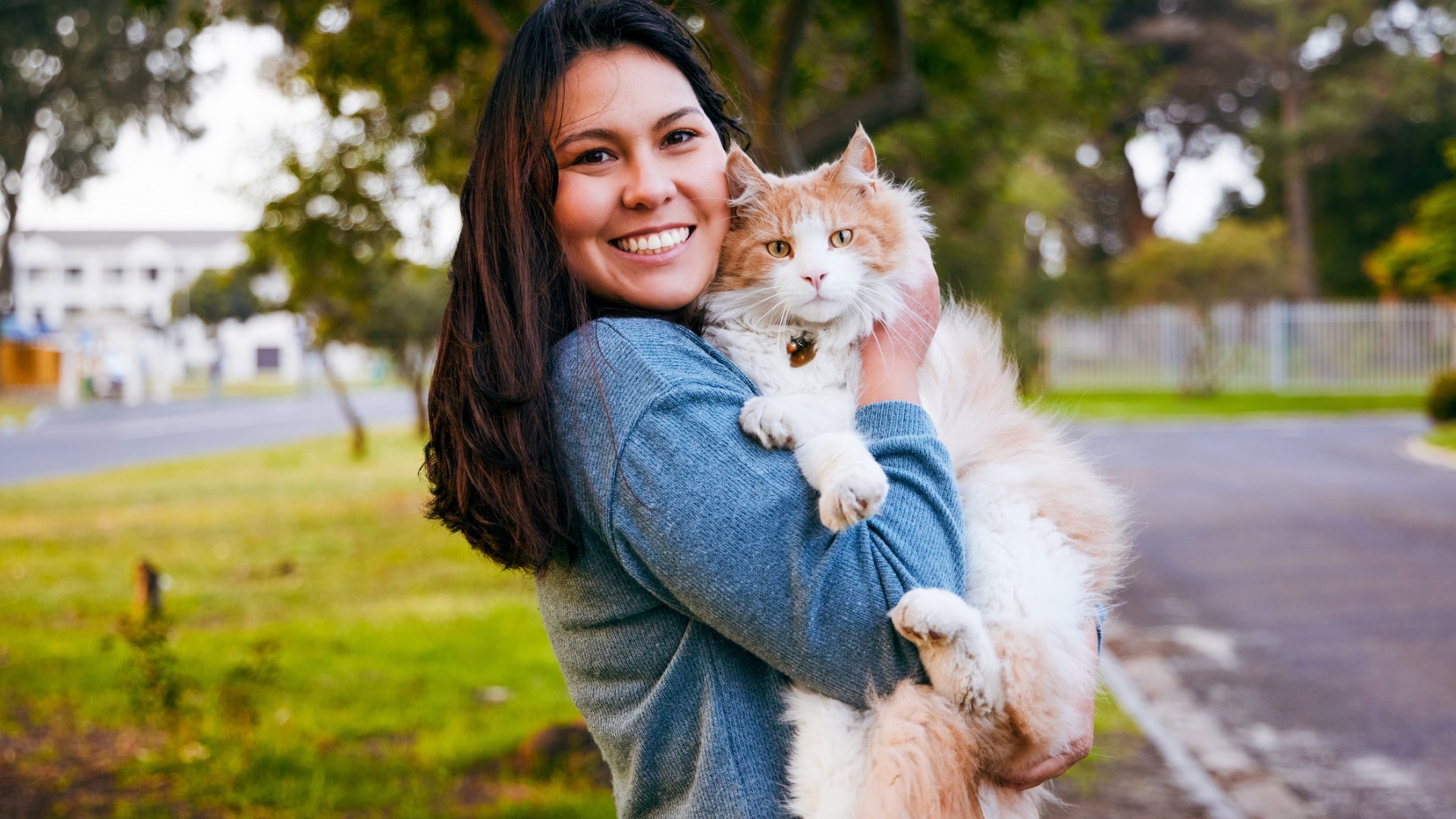
Taking care of a large-breed cat requires thinking of the specific size-related, enrichment, vet, social, and nutritional needs your big kitty may have. In this guide, we'll cover everything you need to know to make sure your large-breed feline friend is set up for a happy, safe, and fulfilling life.
Investing in size-appropriate beds, cat carriers, cat trees, and harnesses will help ensure your big cat is comfortable in their home and out on adventures. You'll want to consult with your vet about dietary and health needs to make sure they live a long and active life. You can use some of the best cat treats to teach your large kitty cues and skills and to help them feel comfortable adjusting to new environments. All of this and other tips are discussed below- keep reading on to learn more.
32 tips for taking care of a large-breed cat
1. Groom them regularly
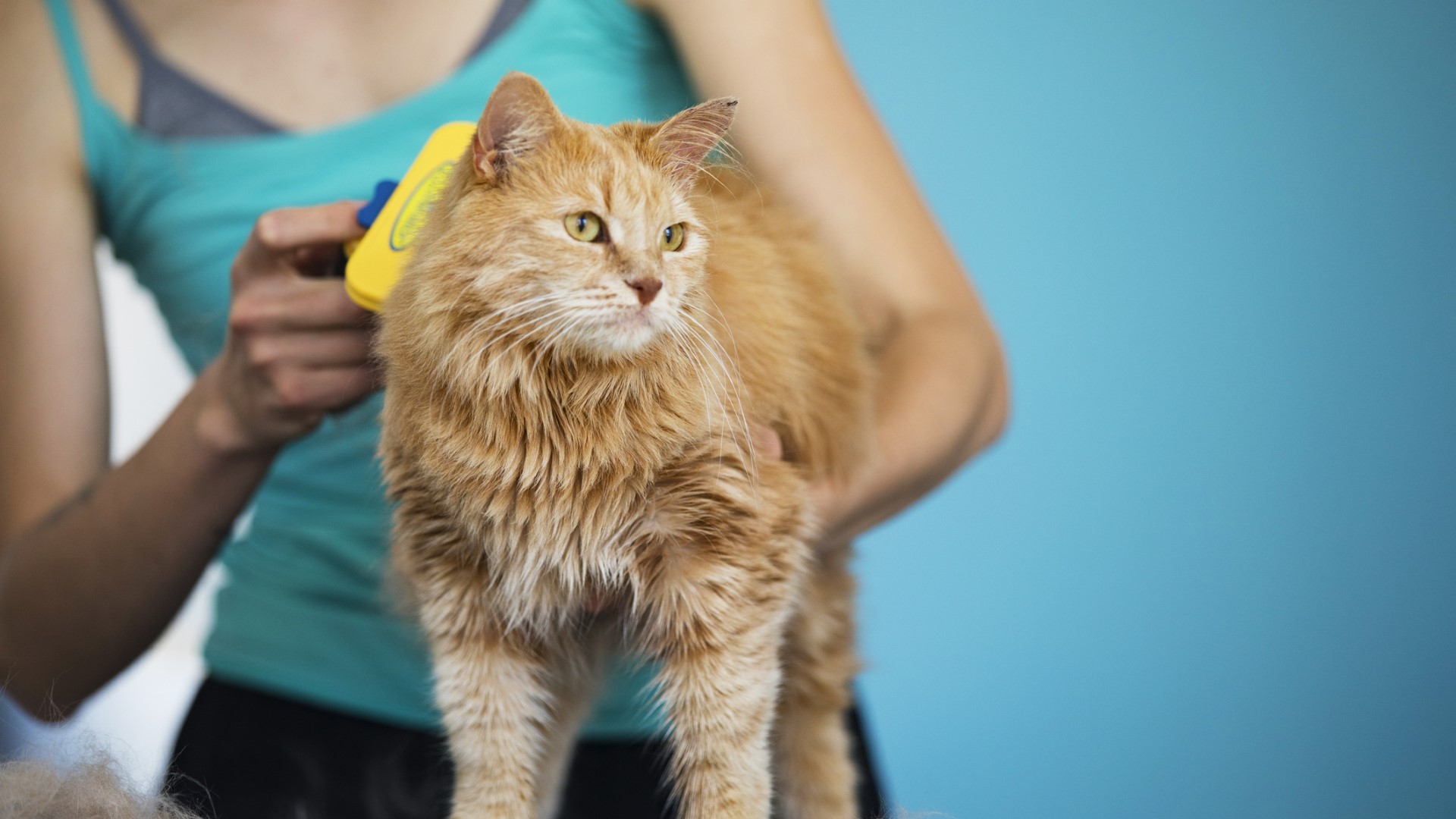
Large-breed cats come in a range of coat types. It's especially important to regularly groom large-breed cats with dense or long hair. With their greater body mass, some large breeds can shed quite a lot of hair. By regularly grooming them, you can keep shedding to a minimum and prevent tangles or mats from forming.
How often you'll need to brush your cat will depend on their coat type and routines. If they frequently have outdoor adventures, you may need to brush them more frequently to remove little bits of plant matter and diet from their fur.
2. Feed high-quality food
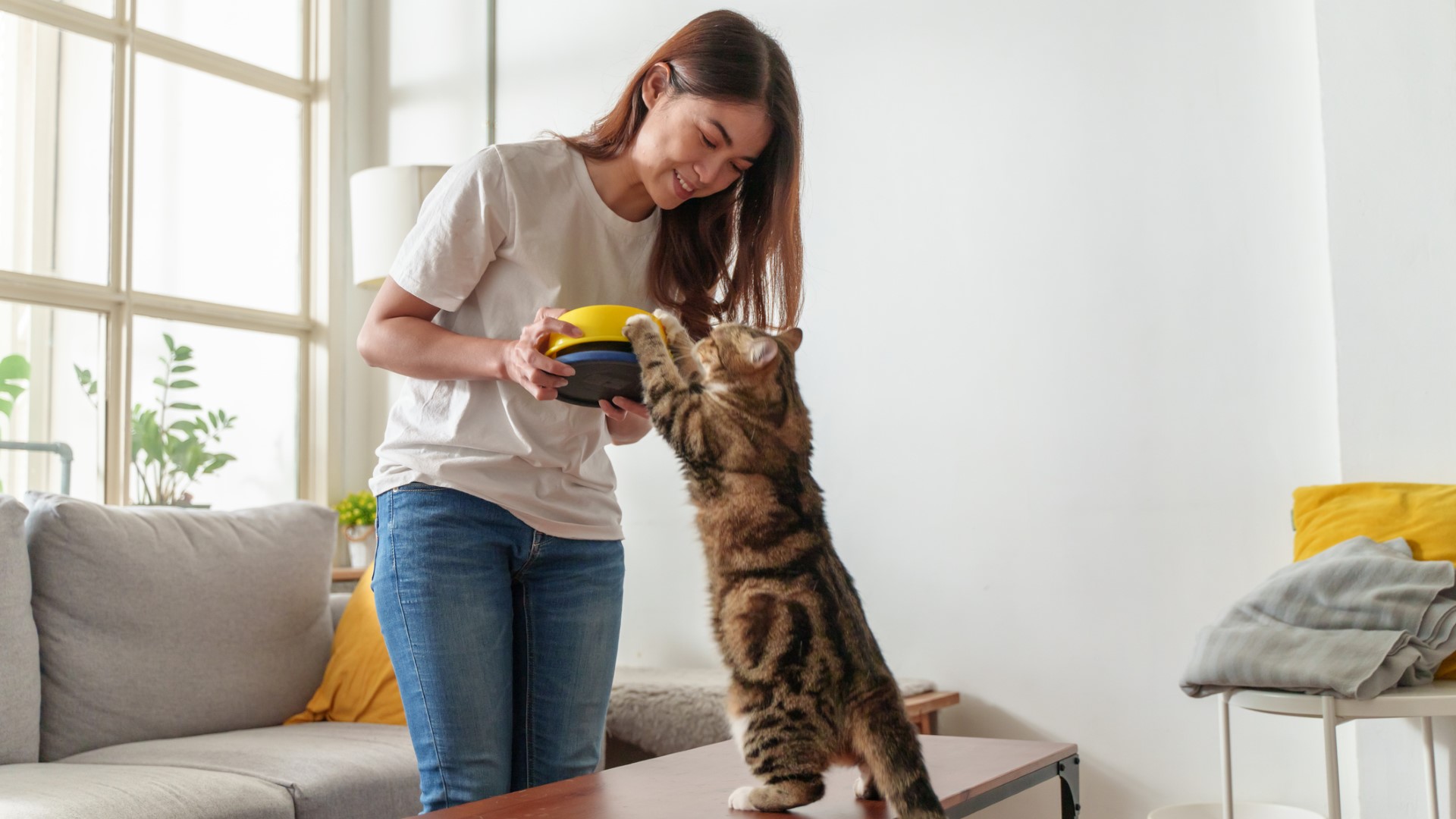
Feeding the best cat food with high-quality ingredients is especially important while your large-breed cat is growing. Some large breeds, like Maine coons, have an increased risk of developing joint conditions like arthritis and hip dysplasia.
Providing them with a proper diet throughout their development and into adulthood will help keep your big kitty as healthy and limber as possible.
3. Schedule annual wellness exams
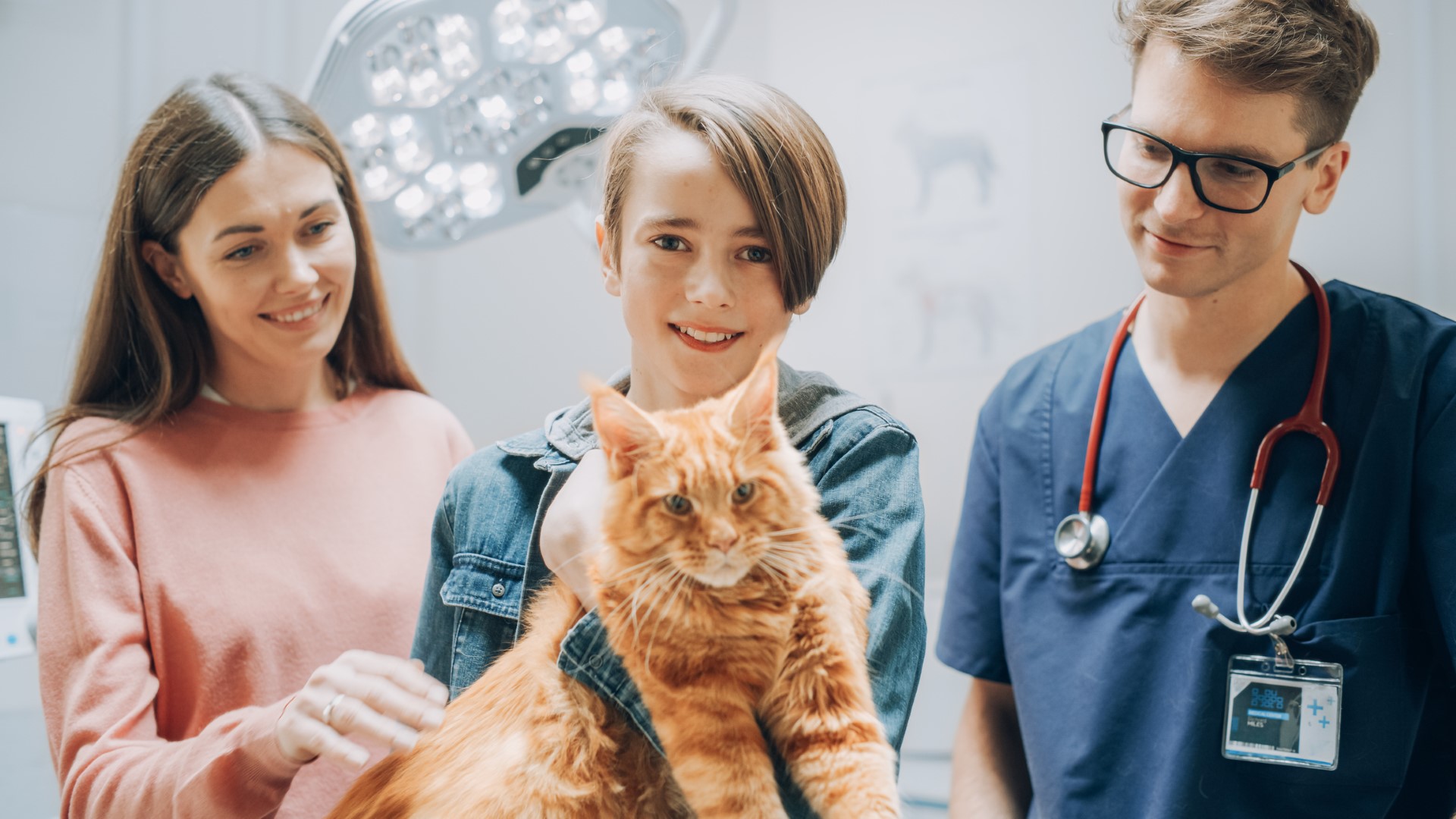
You can help ensure the health and long life of your large-breed cat by scheduling annual or semi-annual vet exams. During these wellness exams, your vet will assess your big kitty’s overall body condition and behavior and will check head to tail for any signs of discomfort, illness, or injury. Your vet will also likely ask about your cat’s diet, water intake, exercise, gait, behaviors, sleep, and if you’ve noticed any sudden changes in any of these.
PetsRadar Newsletter
Get the best advice, tips and top tech for your beloved Pets
4. Monitor their weight
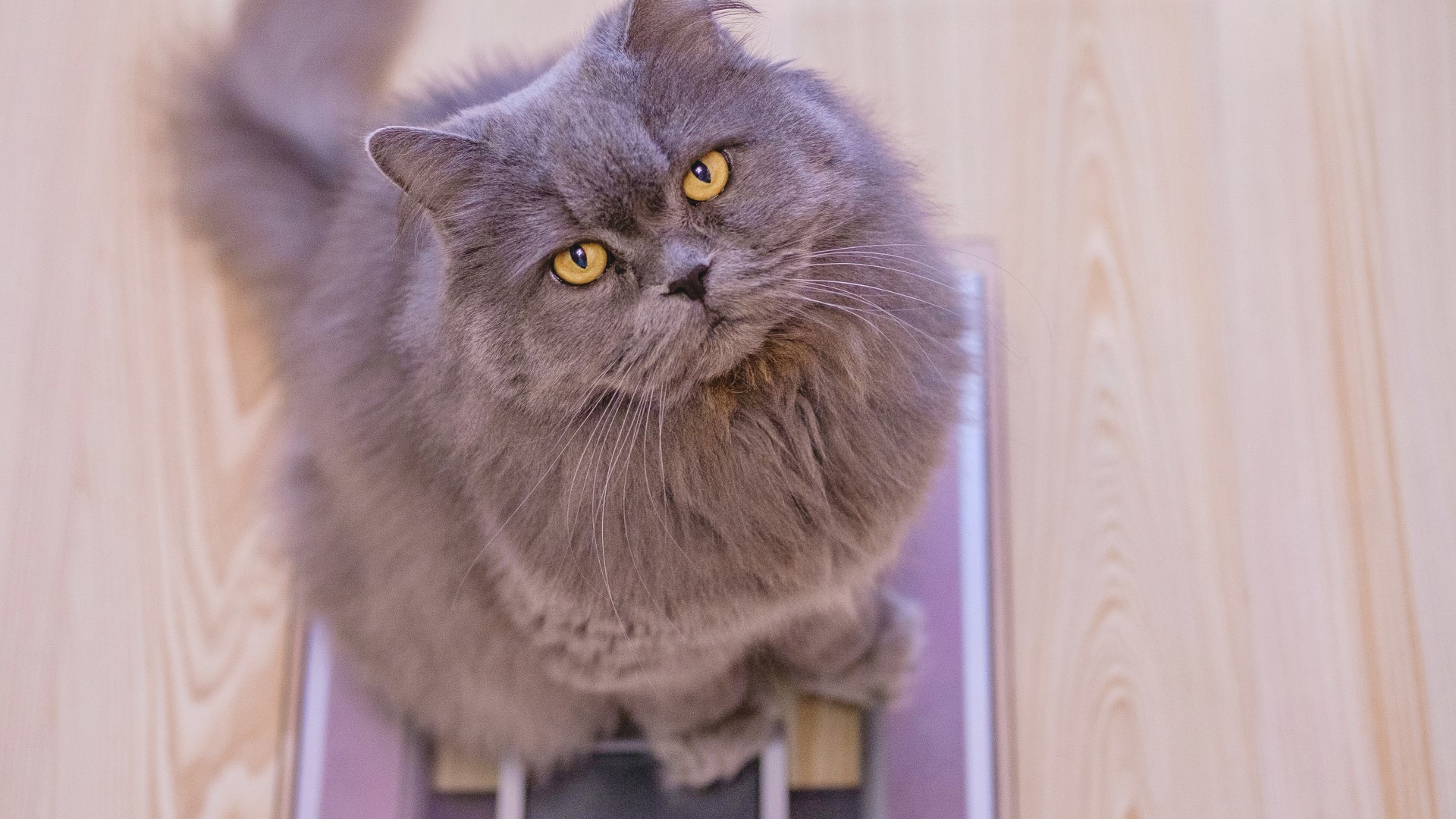
Some large-breed cats can quickly become overweight if their pet parents don’t practice portion control. This can be difficult if your feline companion is especially vocal, and frequently meows for food. Make sure to follow your cat’s food brand guidelines on how much and how often to feed them. If you’re not sure if the guidelines are correct, consult with your vet.
5. Practice positive reinforcement training
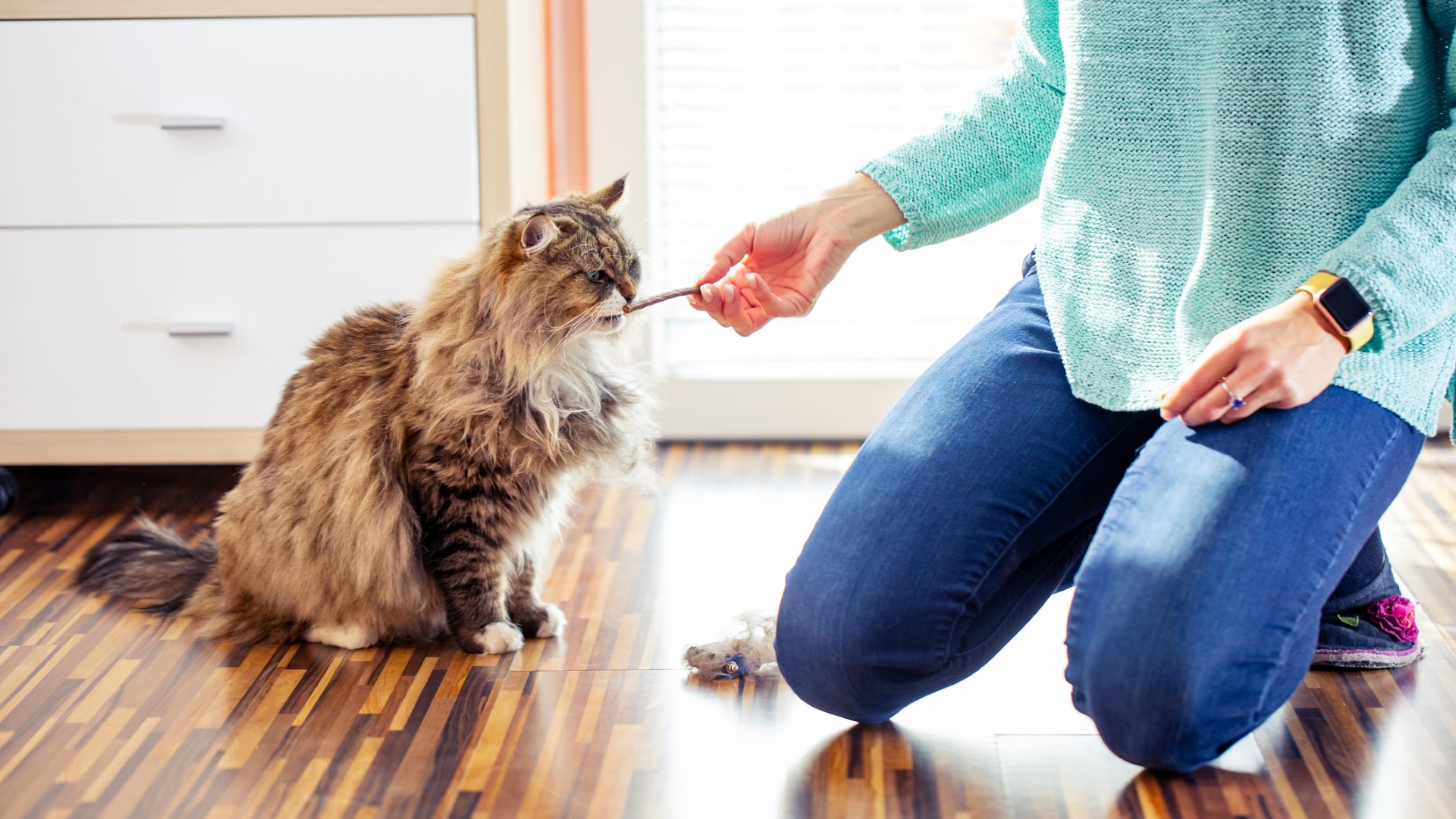
Cats are highly intelligent critters who can quickly pick up new skills and cues. Using some of the best cat toys, treats, and playtime are great ways to reward your large-breed cat for desired behaviors.
Some cues you can teach your big kitty with positive reinforcement training include “sit”, “paw”, “come” and “wait”. It’s important to keep training sessions fun and varied to keep your cat’s interest and help them stay motivated to engage with you.
6. Provide an appropriately sized litter box
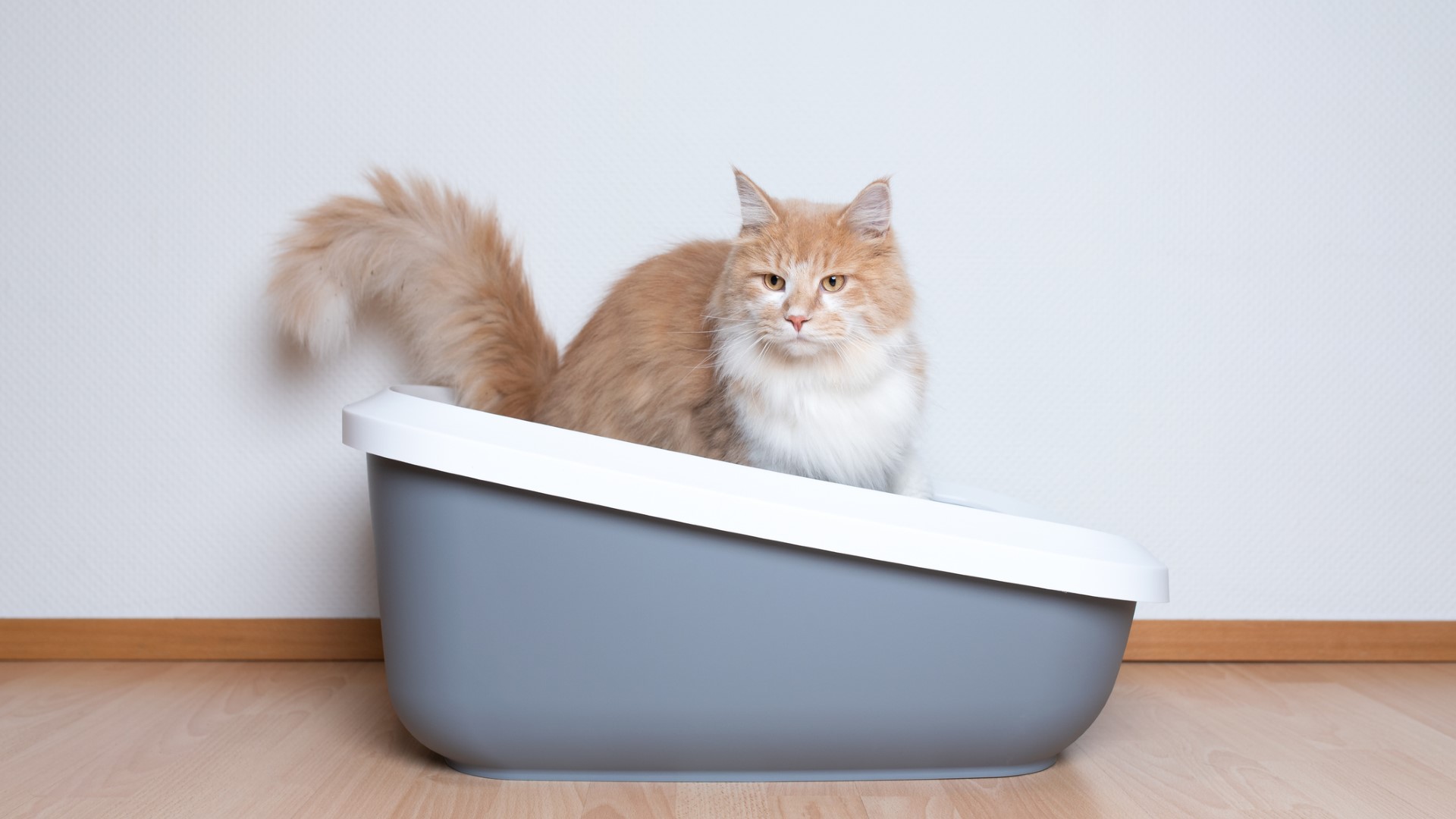
Some large-breed cats may not have enough room in a standard litter box. A properly sized litter box should measure 1.5 times the length of your cat from their nose to the base of their tail. They should have plenty of room to fully and easily turn around.
The space should be big enough for them to comfortably scratch around and use the bathroom while staying clean. If your large cat isn’t using their litter box, you may want to upgrade one of the best cat litter boxes and ensure that it’s big enough for your big feline friend.
7. Provide a robust and tall scratching post
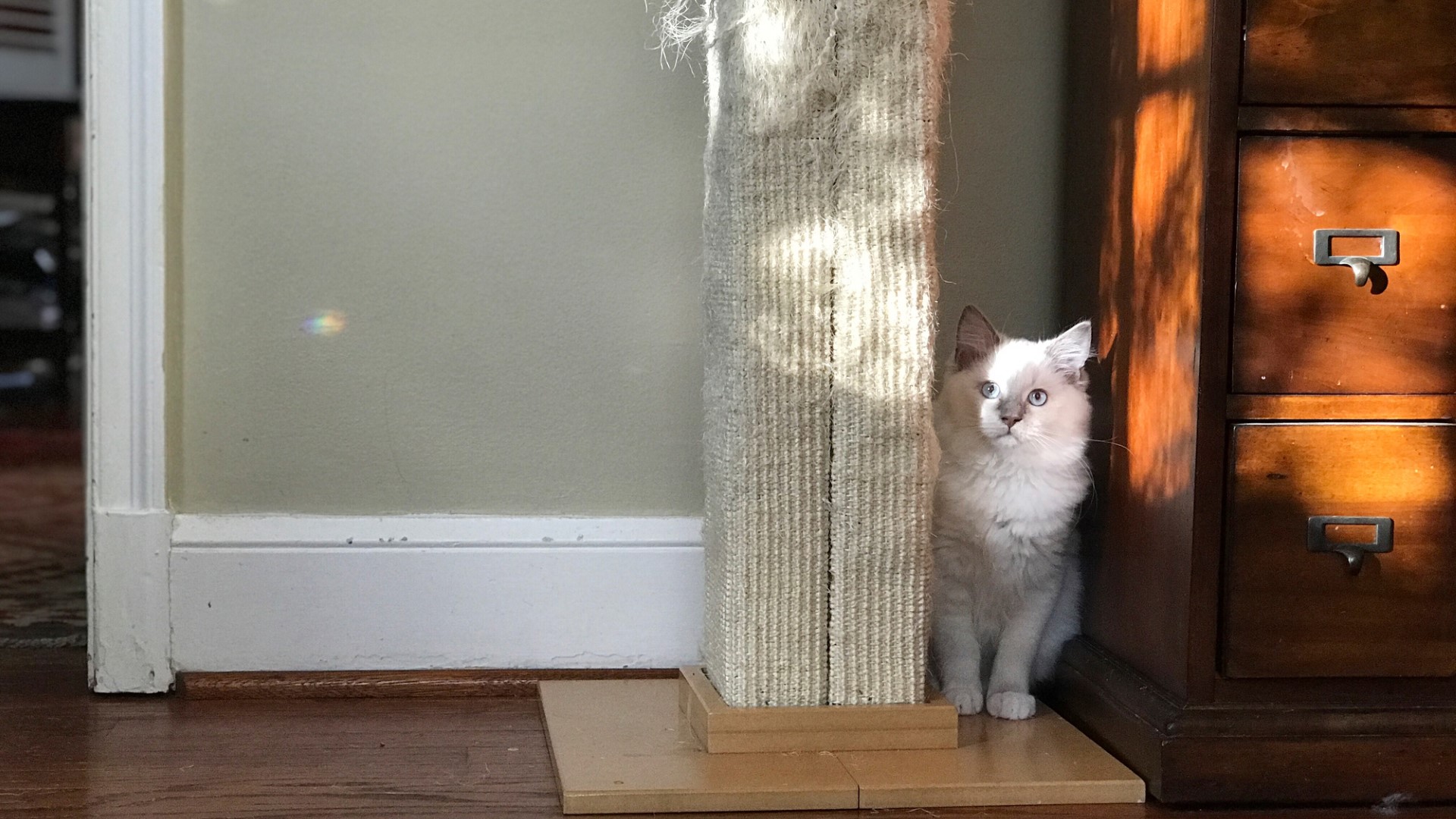
Scratching posts provide essential enrichment and nail maintenance for cats. If your cat is a honking 20-pound Maine coon, you’ll want to make sure you use one of the best scratching posts that is made to be extra durable and tall.
For large-breed cats, you’ll want to select posts that are at least three feet tall to accommodate their long and robust frames. You may also want to use a weighted base to ensure your big kitty doesn’t accidentally knock it over.
8. Provide a large cat bed
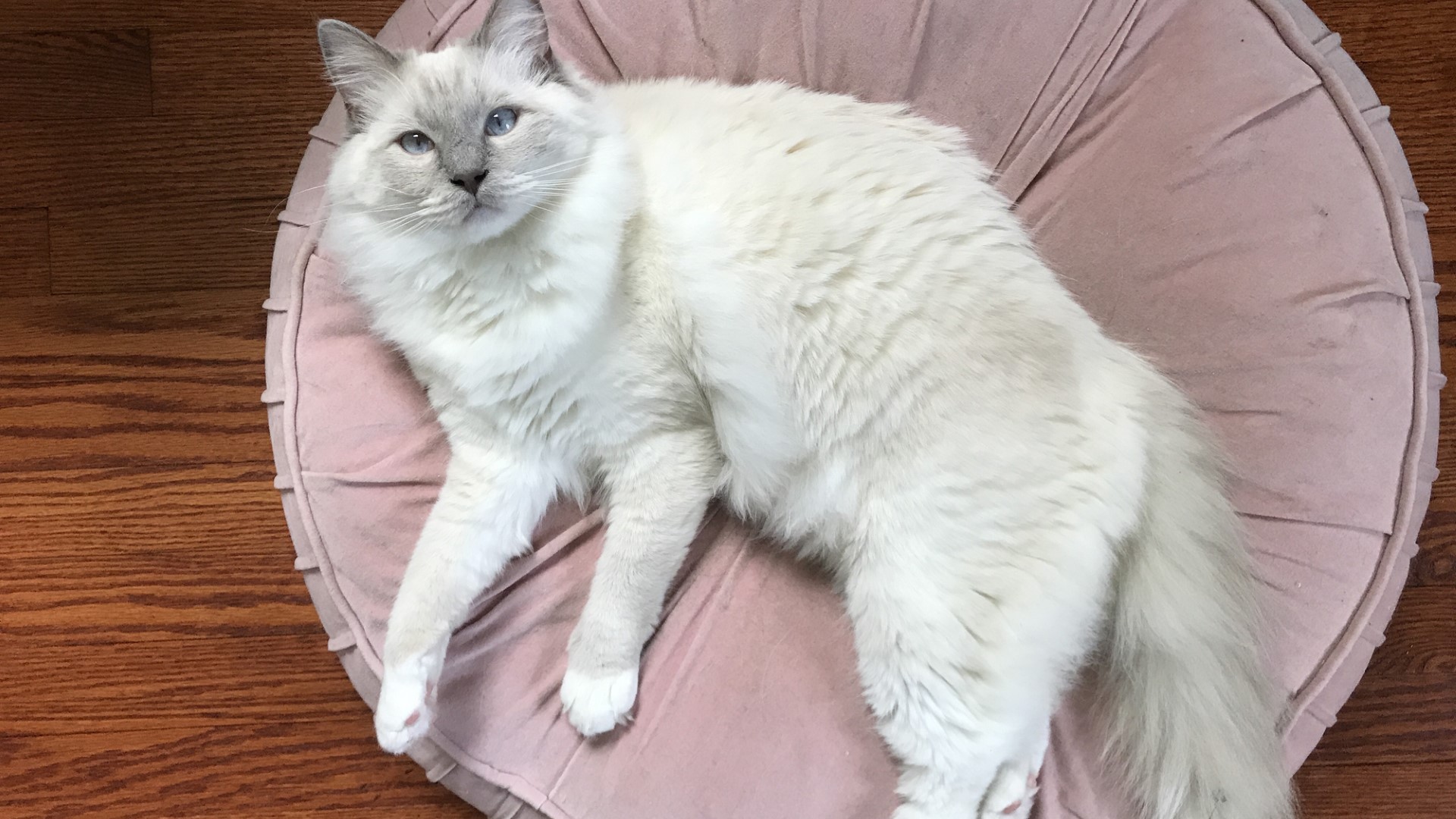
A cat bed should be big enough for your kitty to fully and comfortably stretch out as well as curl up. If you have a large-breed cat, it’s important to make sure the bed provides this space.
Some folks prefer to use medium-sized dog beds for big cats, so that’s an option as well. If your cat prefers covered cave-style cat beds you’ll probably want to get the largest size available as this style of cat bed tends to be made on the smaller side.
9. Socialize them with other cats
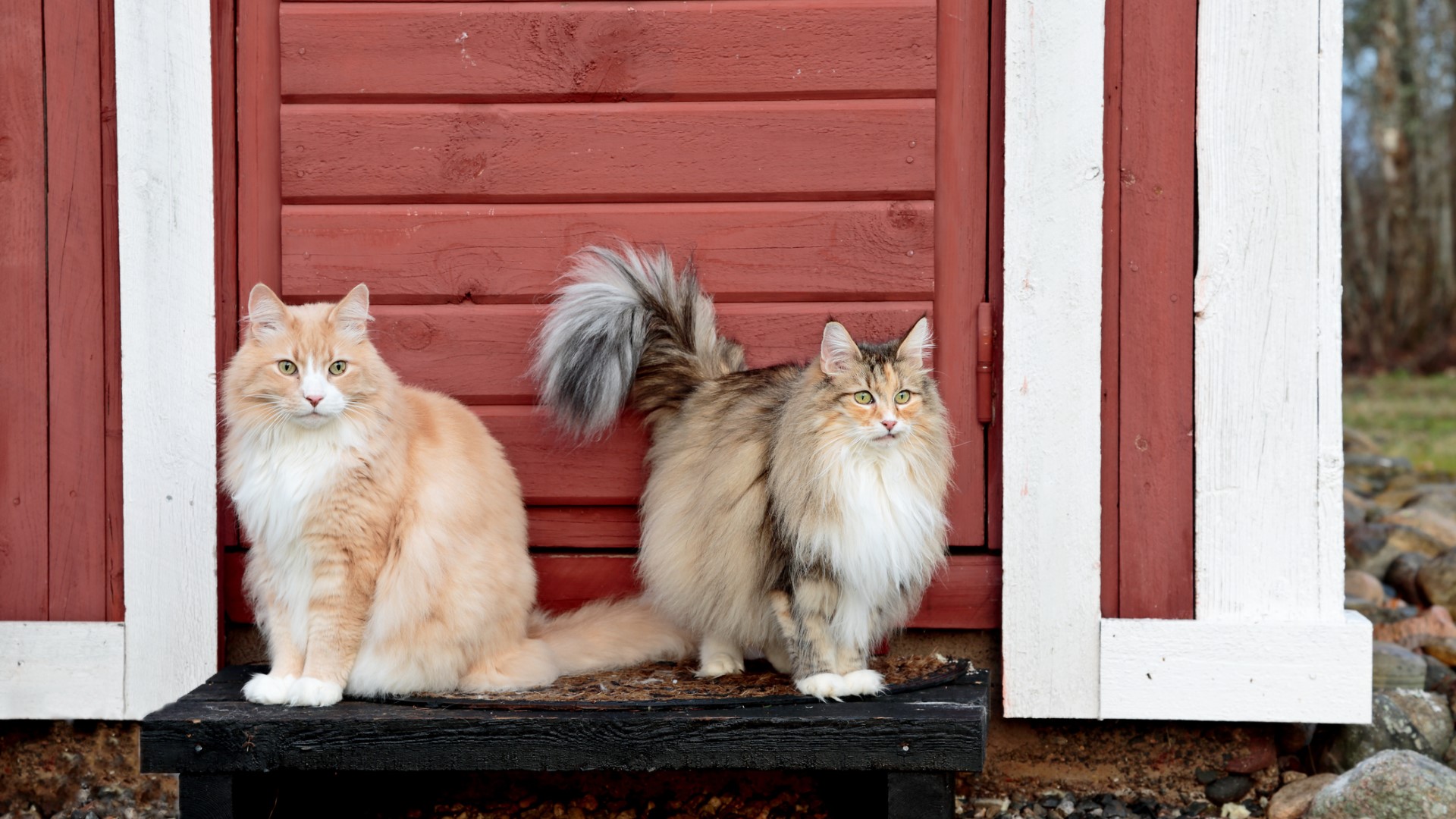
Ideally, you’ll want to socialize your large-breed cat with other kitties from an early age. Of course, this isn’t always possible if you’re adopting an adult cat from a shelter or rescue. While socializing with other cats from a young age is ideal, you can often still help your cat feel more comfortable around their own kind by incrementally introducing them to other sociable kitties.
If your big cat is particularly shy, you can always start by simply introducing a rag covered in the scent of another cat for your kitty to process first.
10. Provide plenty of climbing space
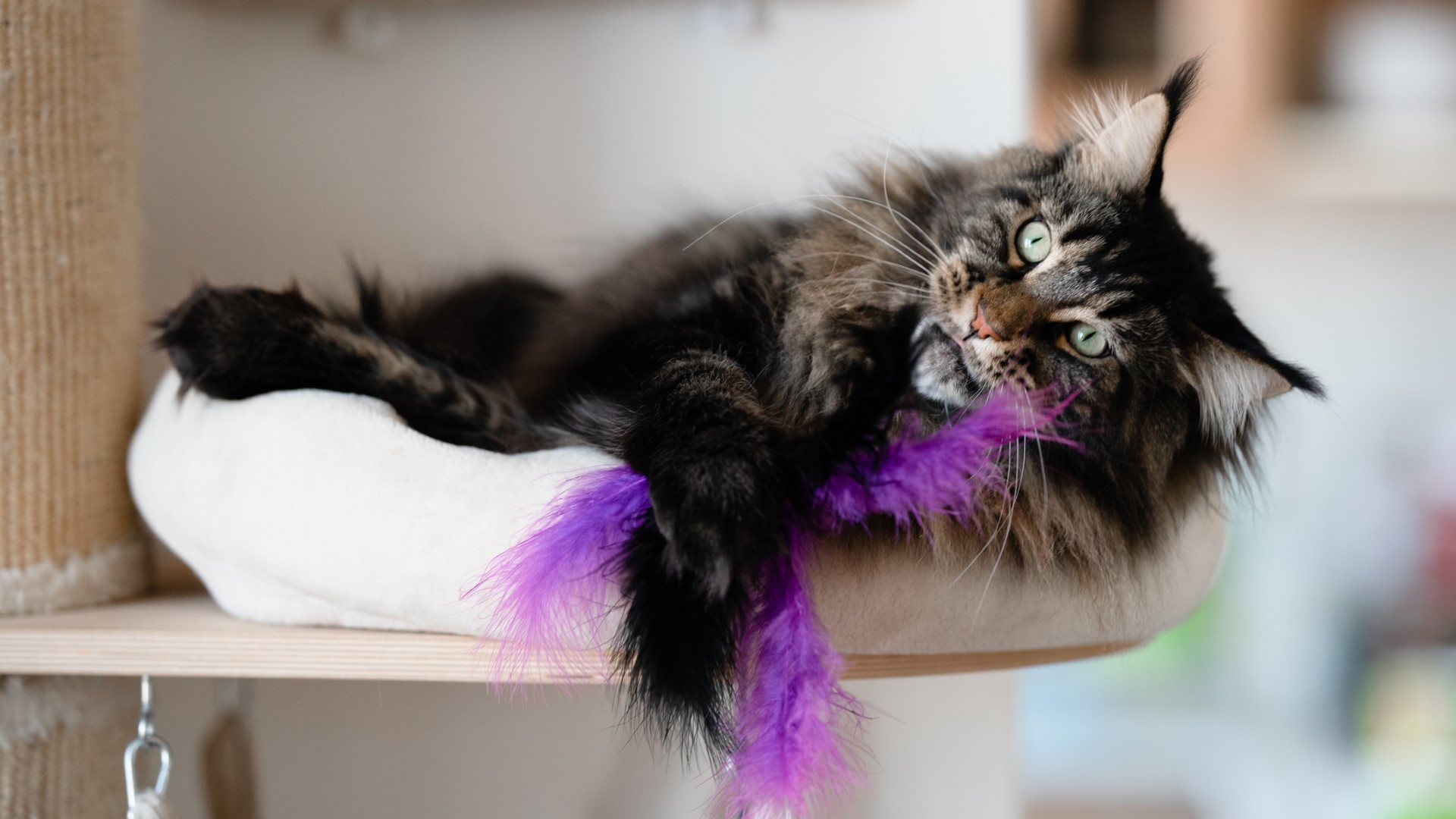
To ensure your large-breed cat is living their best life, make sure to provide plenty of climbing space for them to use and explore in your home. You can use some of the best cat trees or platforms to set up a vertical wonderland for your feline friend. Make sure the platforms are large enough for your large-breed cat to comfortably lay and hang out.
You can also add a boxed platform with a bed inside if your cat loves to nap at height. Vertical space is also great for multi-pet or high-energy homes as it allows your cat an area to retreat to, especially if pups are present.
11. Invest in a large cat carrier
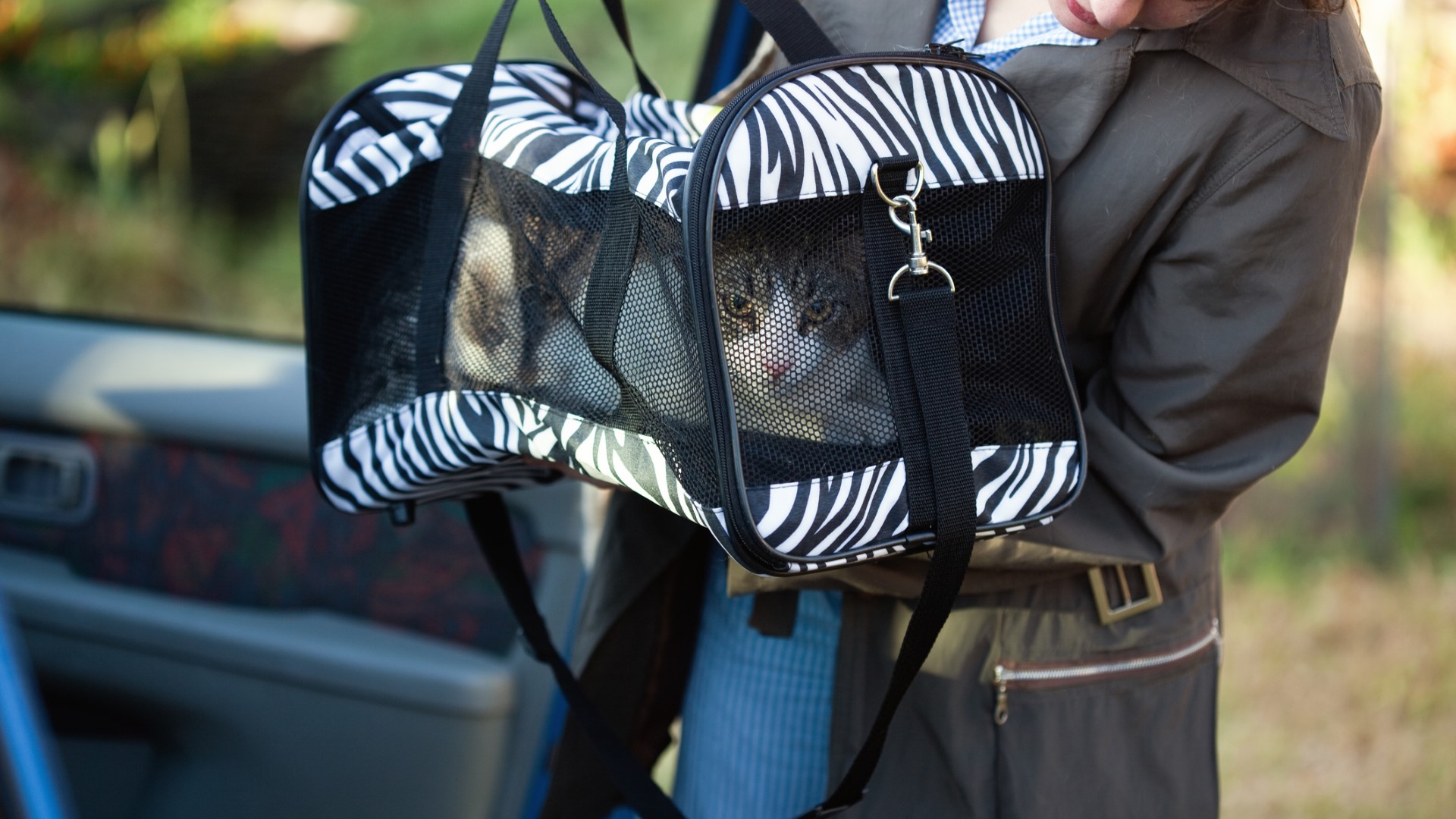
To ensure your large-breed cat's safety during vet visits and transport, it's important to have a suitably sized cat carrier. Soft crates with plenty of ventilation and windows can add comfort. Make sure the carrier is sized so that your big kitty can comfortably enter and turn around. You don't want them to feel squished inside it.
Slowly acclimate your cat to being inside the crate before transporting them in it. You can introduce it to them in a comfortable quiet place and give them their favorite treats while they're inside to associate the crate with good things.
12. Support their joint health
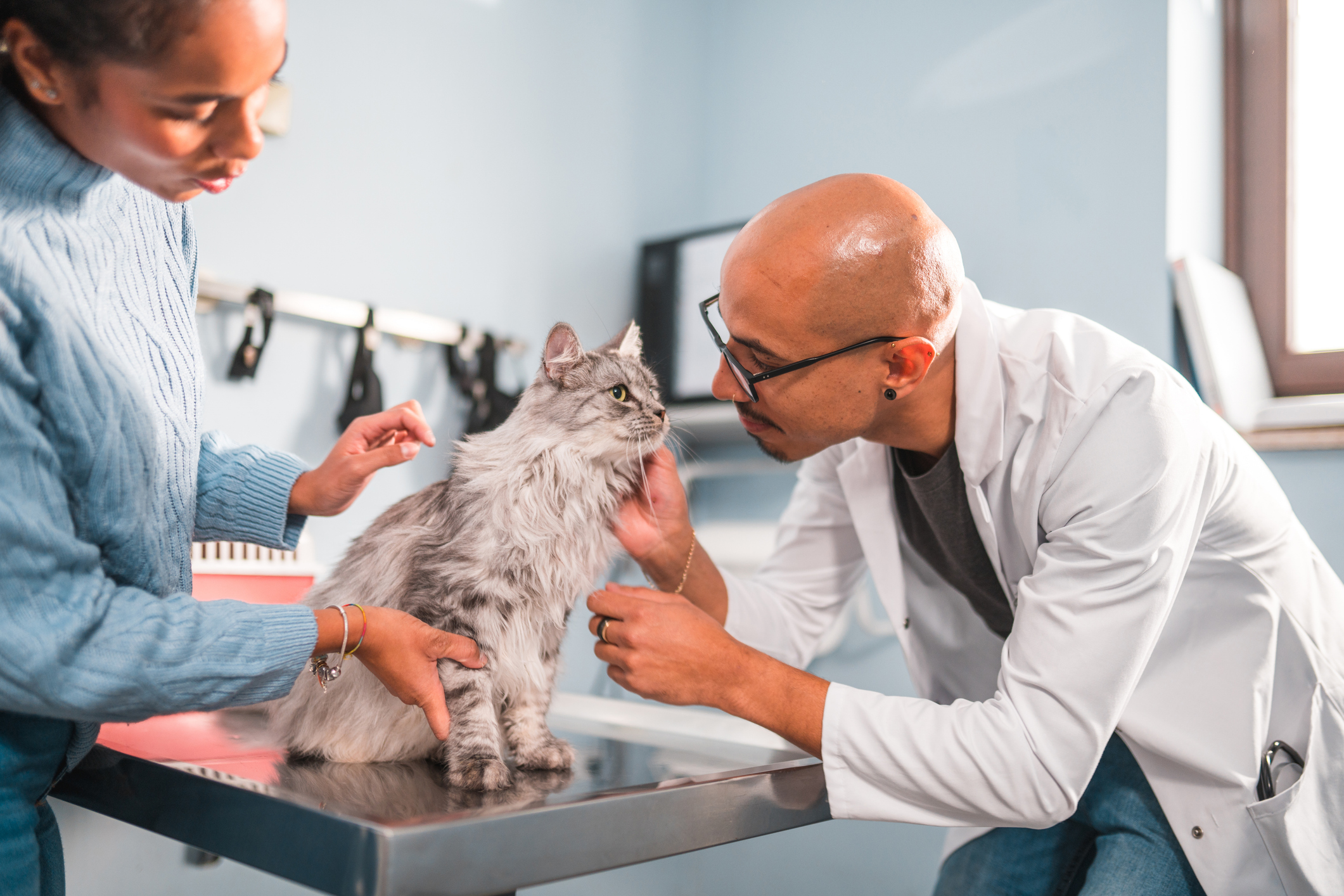
Since large-breed cats can have an increased risk of joint issues and feline arthritis, you may want to consider investing in a joint supplement. Consult with your vet about your concerns and ask if they recommend providing joint supplements to support your large-breed cat's mobility. Many feline hip and joint supplements contain glucosamine, chondroitin, methylsulfonylmethane (MSM), and omega-3 fatty acids, which can reduce joint inflammation and pain in cats.
13. Provide shaded areas outside
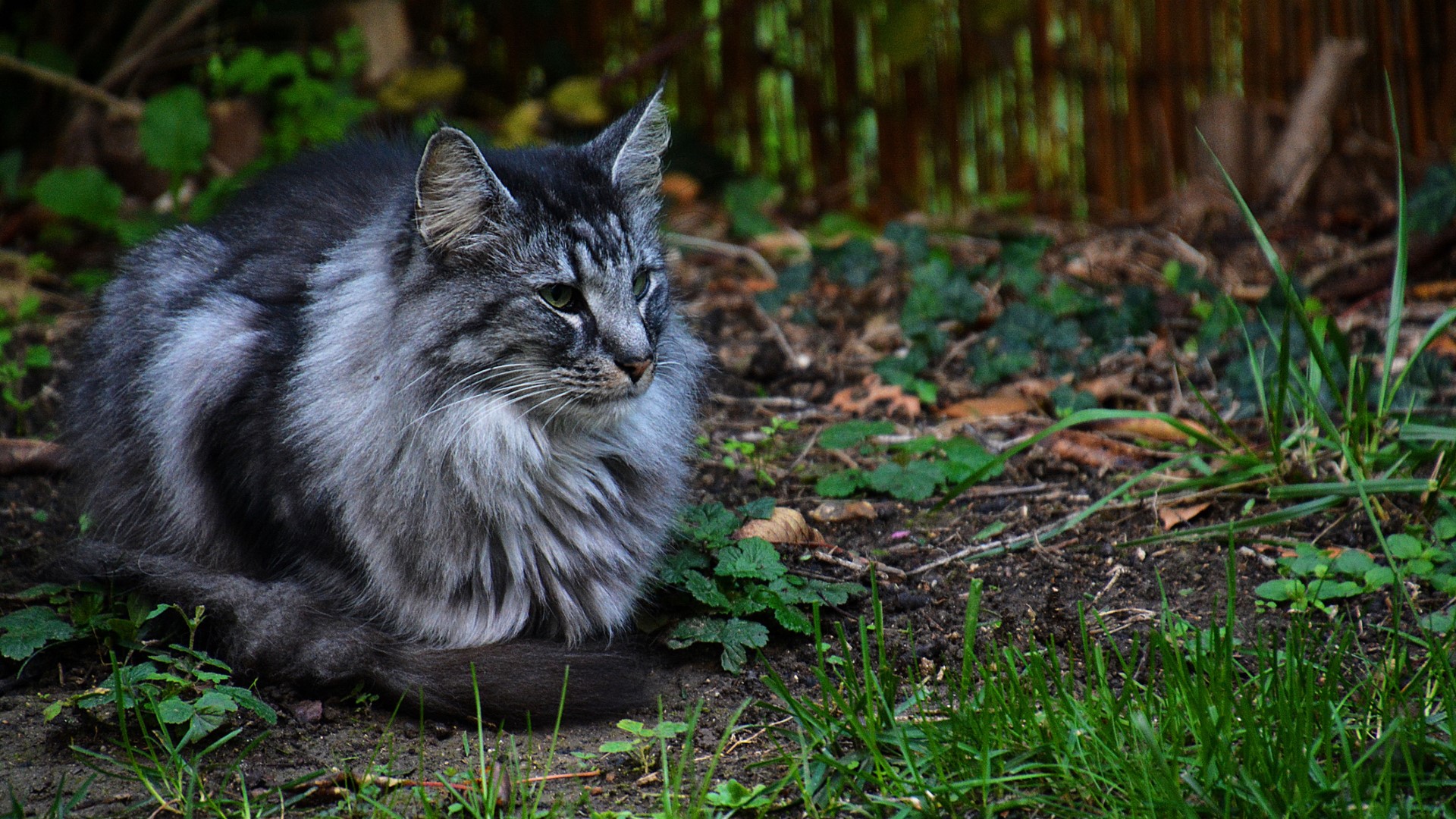
Many large-breed cats thrive in cool weather, such as the Maine coon and Norwegian forest cat. If your cat is large and has a dense double coat, you'll want to make sure they have plenty of access to shady areas if they spend time outside. These shady areas should be a safe and quiet place for your cat to relax in to keep cool during the hot months of the year.
Make sure to provide a constant source of freshwater as well to ensure they stay hydrated. If your cat is an indoor/outdoor kitty, you can also consider adding a cat door to allow them to come inside if they become too warm.
14. Socialize them with cat-friendly dogs
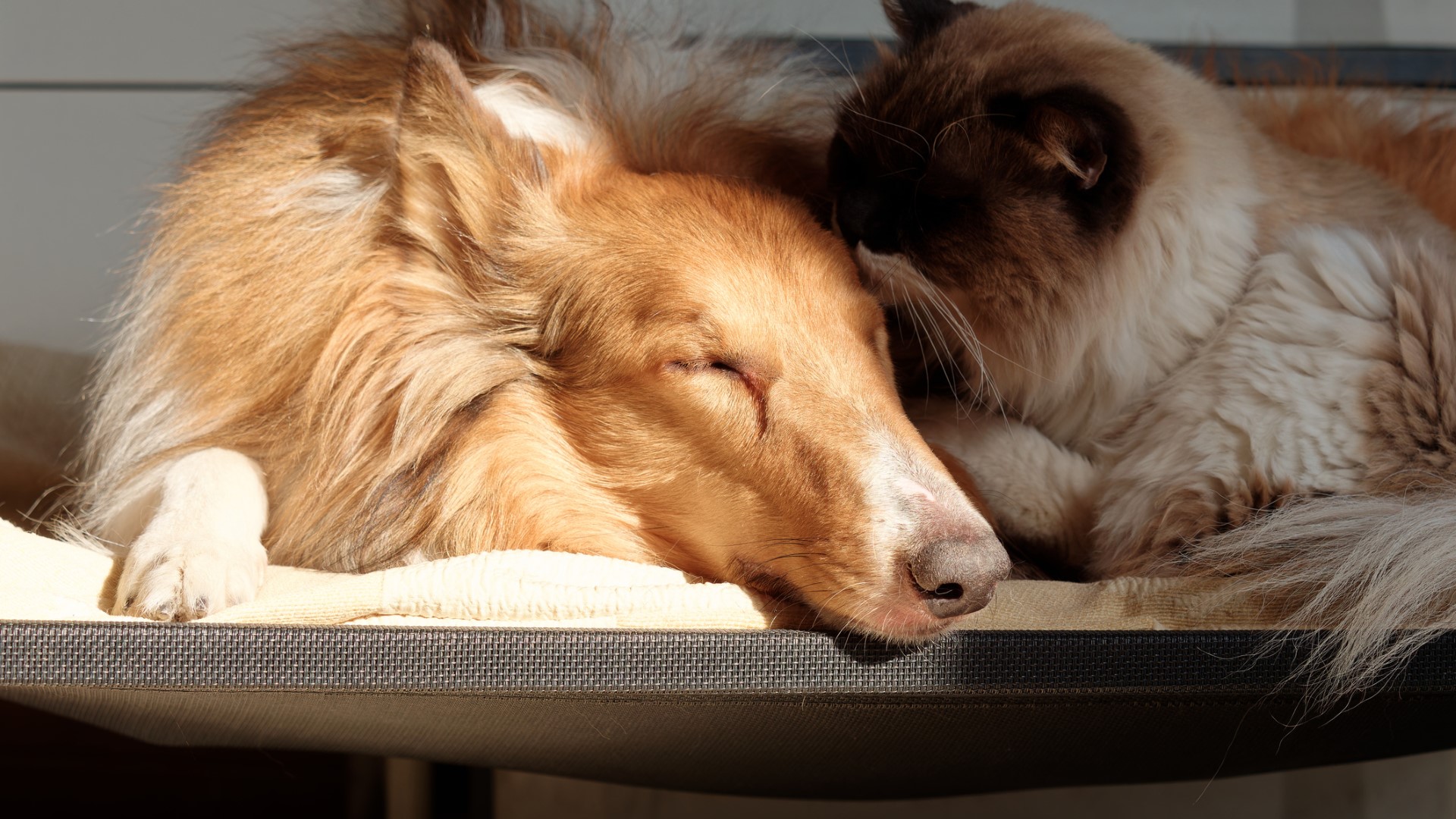
If you plan on having a multi-pet household of dogs and cats, it's important to make sure your large-breed kitty feels safe and comfortable around their canine counterparts.
Your dog may be interested in playing rougher with a larger cat, so make sure to teach your pup how to politely interact with cats to reduce the chances of conflict. The best time to socialize your large-breed cat with dogs is during kitten-hood when their brain is the most wired for learning and processing new experiences.
15. Teach them to walk in a harness
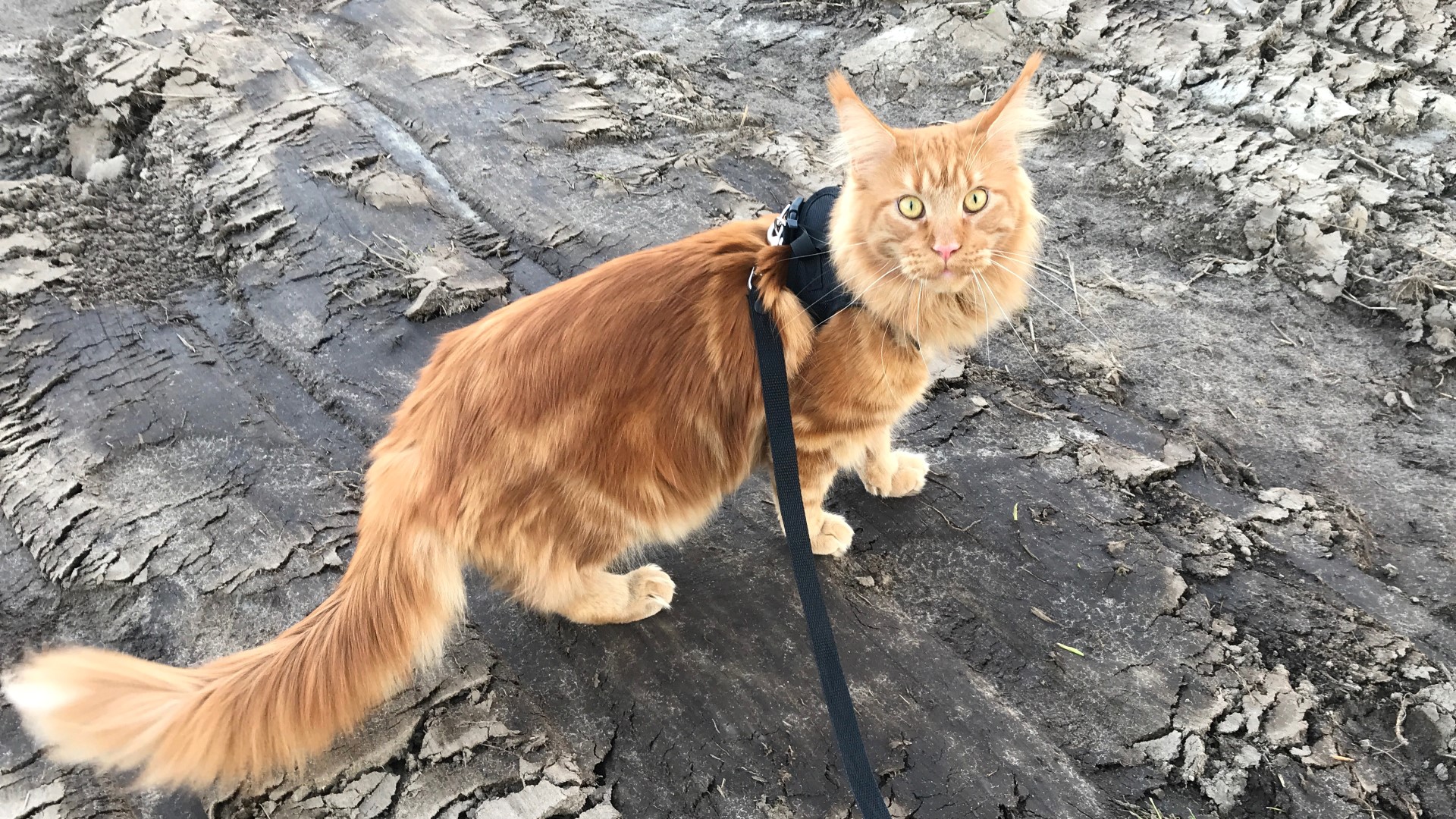
If you'd like your big kitty to safely enjoy their time outside, consider teaching them to walk on a harness and leash. The earlier you introduce your cat to a harness during their development, the better. As with introducing anything new to your kitty, it's important to move at the speed of your cat's comfort and build positive associations.
You can start by placing the harness on the floor and rewarding your cat for exploring it. From there, slowly build to holding the harness against your cat and using treats to encourage them to put their head through the opening.
Move slowly and incrementally with each step of the process until your cat is comfortably wearing the harness. Practice walking them indoors in a safe environment first before taking them outside.
16. Consistent handling
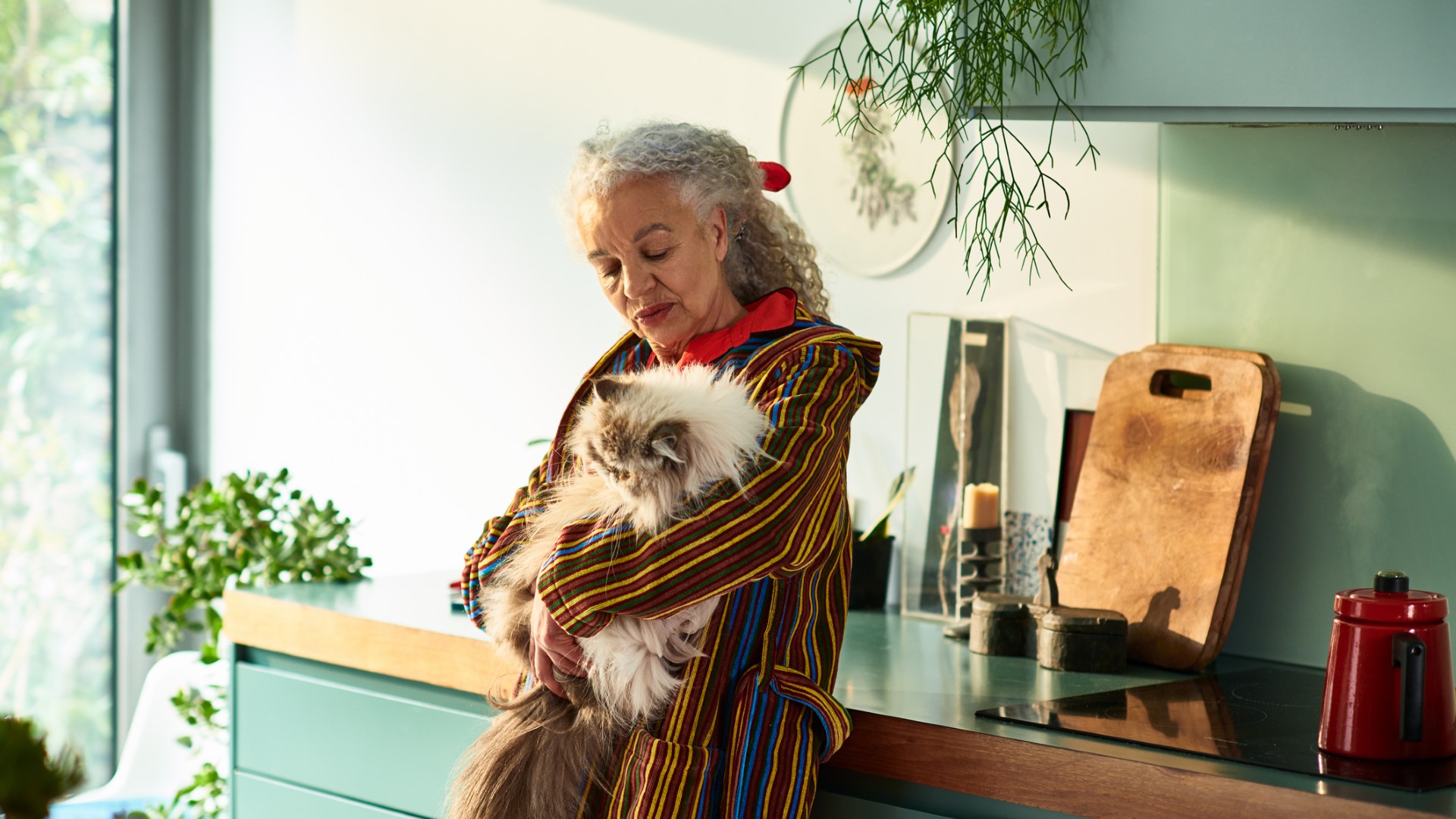
It's important for your large-breed cat to feel safe and comfortable with handling. Gentle, considerate handling should start as young as possible. You want your cat to feel relaxed with being picked up and comfortable with various aspects of vet handling such as having their teeth, ears, and eyes examined, and their legs gently manipulated.
By helping them feel comfortable with this process from an early age, you can create safer handling experiences for you and your household, your cat, vet, and groomer. Plus, a cat comfortable with handling is more likely to grow up to be snuggly!
17. Provide parasite preventatives
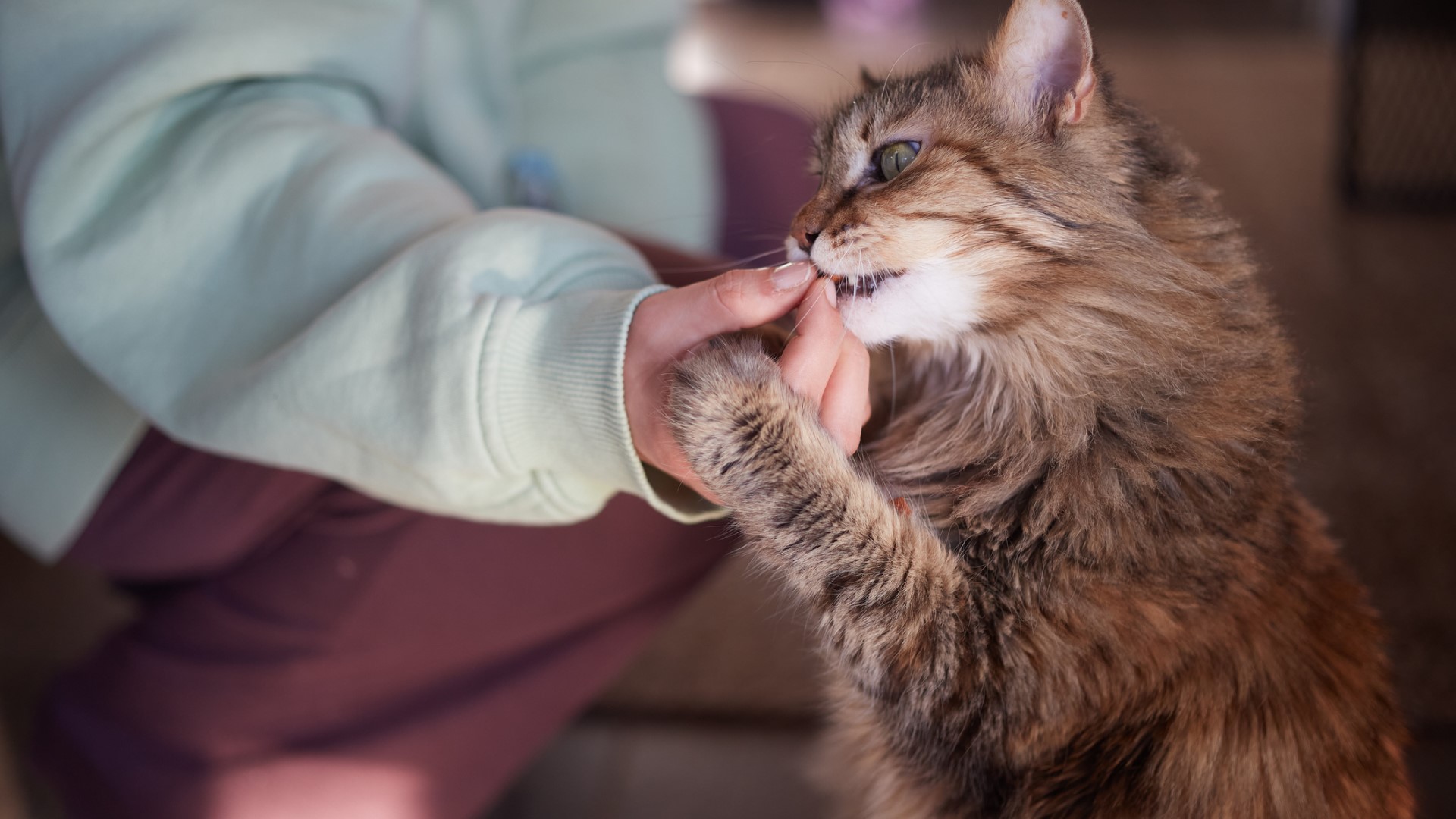
It's essential that your large-breed cat is protected from a range of parasites, including fleas, ticks, heartworms, and intestinal worms. For over-the-counter and prescription preventative, be sure to follow the dosing instructions to ensure your large kitty receives adequate protection or treatment.
Be sure to read the instructions when using the best flea treatments for cats as some need to be administered with food. If your cat is a picky eater, hiding the medicine in a tasty snack or meal can help ensure they smoothly intake all of the preventatives.
18. Provide enrichment
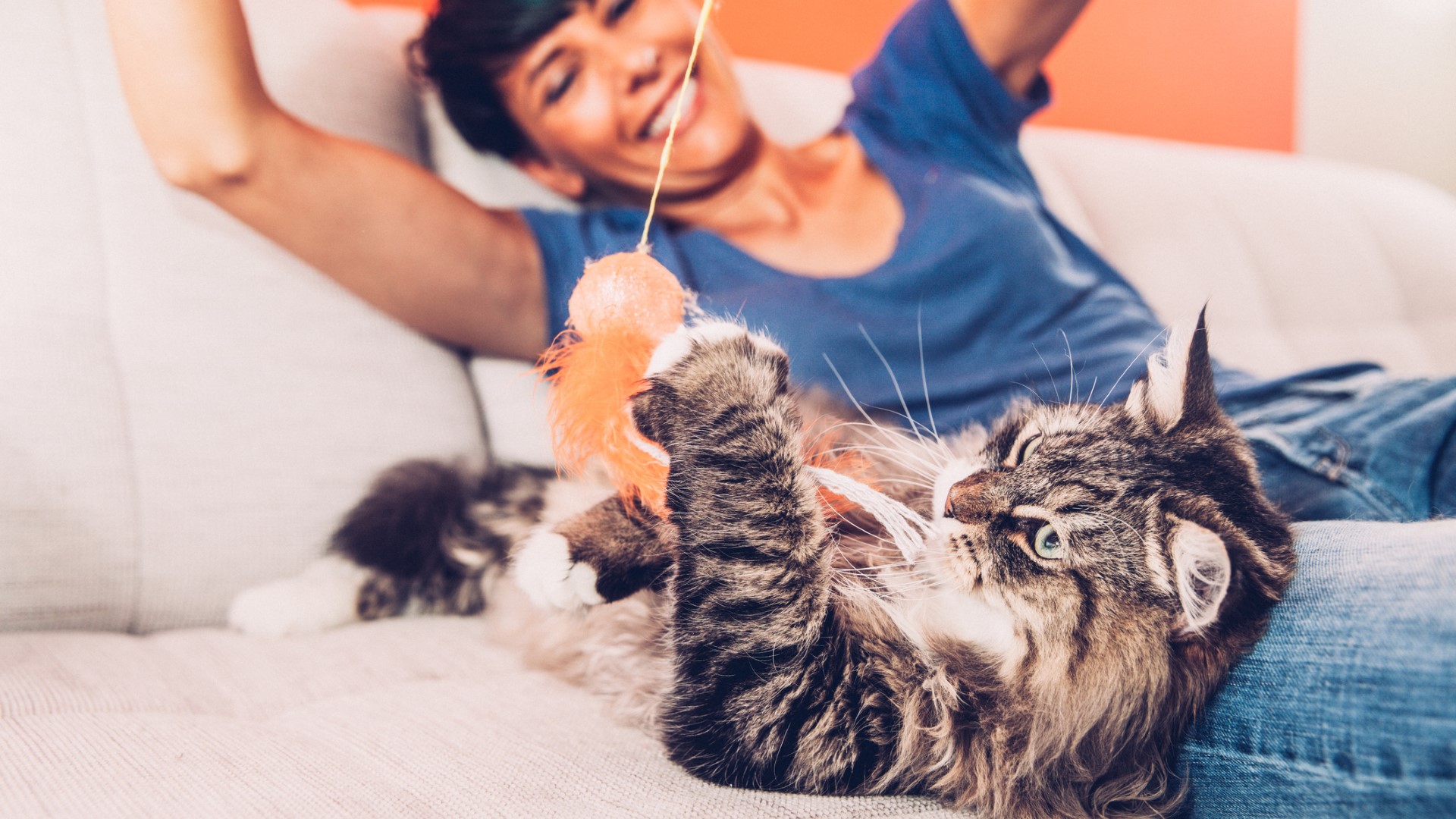
Enrichment is an important part of keeping your large-breed cat healthy and happy. Providing some of the best interactive cat toys and puzzles can keep your kitty mentally sharp and engaged. Making sure they have access to plenty of toys also helps keep your cat out of mischief, especially while you're away. Interactive feeders can also be a great way to make mealtime fun.
Just be sure to observe how your cat engages with the feeder. Some kitties love them and enjoy the challenge, but others may feel frustrated by them which can affect their enjoyment of their meals.
19. Provide a comfortable, quiet place for rest
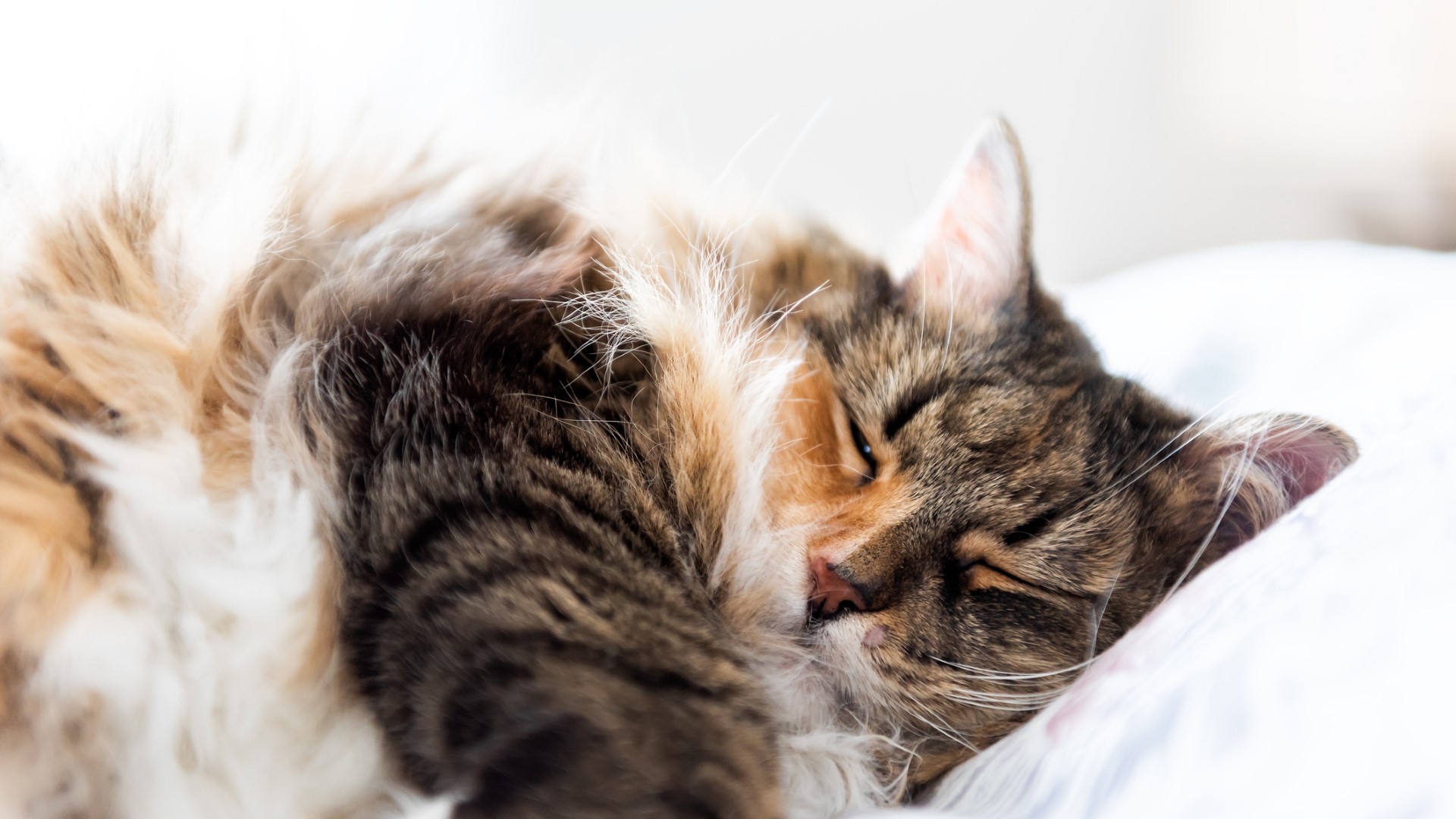
Adult cats need about 18 hours of sleep per day. A sleep-deprived cat can suffer from several mental and physical health effects, so it's important to provide a comfortable and quiet place for your kitty to sleep during the day and night.
This space could be a covered cat bed, a comfy perch, or a comfortable space on or under your bed. If you have kids in your home, make sure to explain to them the importance of not disturbing your kitty while they're sleeping.
20. Microchip them
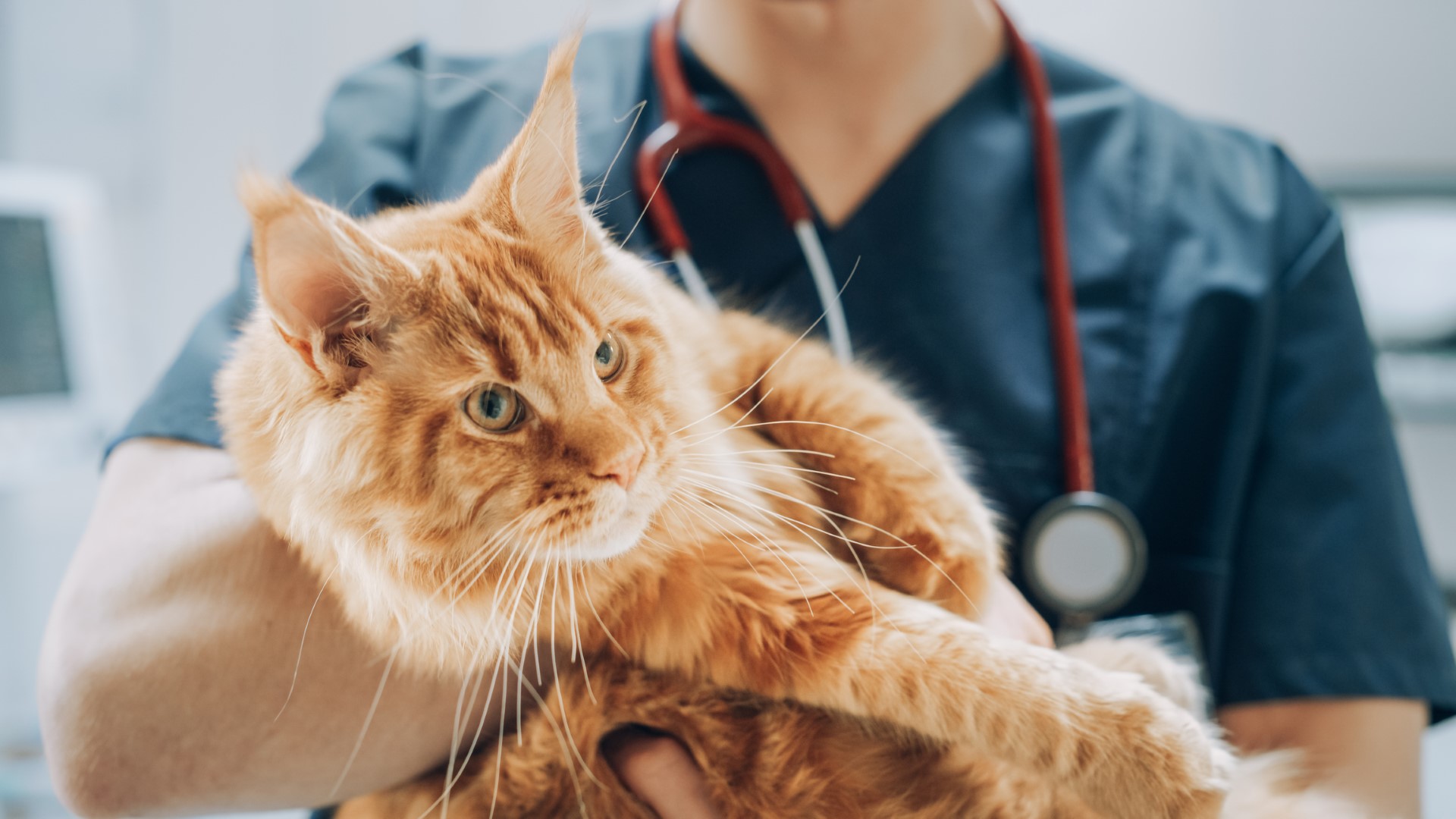
If your cat spends time outside or is a door darter, it's especially important to microchip them. Your vet should be able to provide this service. If you adopted an adult cat or kitten from a shelter or rescue, they'll likely already be microchipped.
If your large-breed cat becomes lost, having a microchip can greatly increase the chances that a finder can quickly reunite you with your beloved kitty. And unlike tags, a microchip can't come off if the harness or collar breaks.
21. Consider spaying or neutering your large-breed cat

Especially if your cat spends time outside or you have multiple kitties in the home, it's important to consider spaying or neutering your large-breed cat. According to the National Kitten Coalition, in the U.S., approximately 3.4 million cats enter the shelter system every year. Additionally, some areas of the country have large populations of stray and feral cat colonies.
By spaying or neutering your cat, you can help to ensure that you don't contribute to this growing crisis. If you choose to not spay or neuter, we recommend only letting your cat outside on a leash or in an outdoor enclosure to make sure they don't breed.
22. Daily exercise
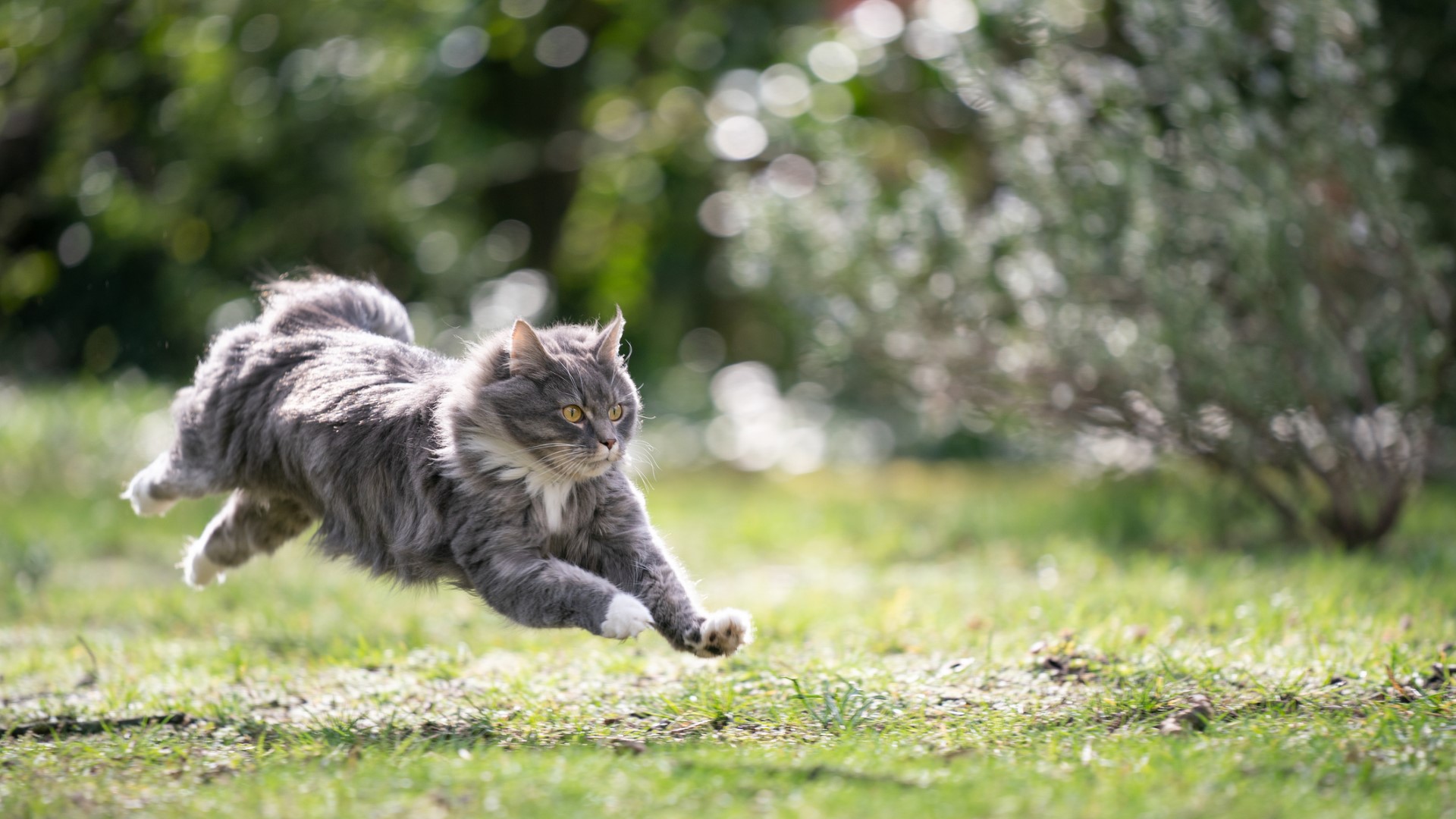
Daily exercise is essential to keep your large-breed cat healthy and happy. Two 15-20 minute sessions of high-intensity activity are usually appropriate for most large breeds. Many cats love chasing toys attached to poles, and you can use them to encourage your cat to run, leap, and climb as they follow the toy.
Allow your cat to actually catch the toy throughout the play session so they don't become overly frustrated. So cats also love to play fetch. One large breed, the Maine coon, is especially known for enjoying a game of fetch.
23. Limit jumping from height
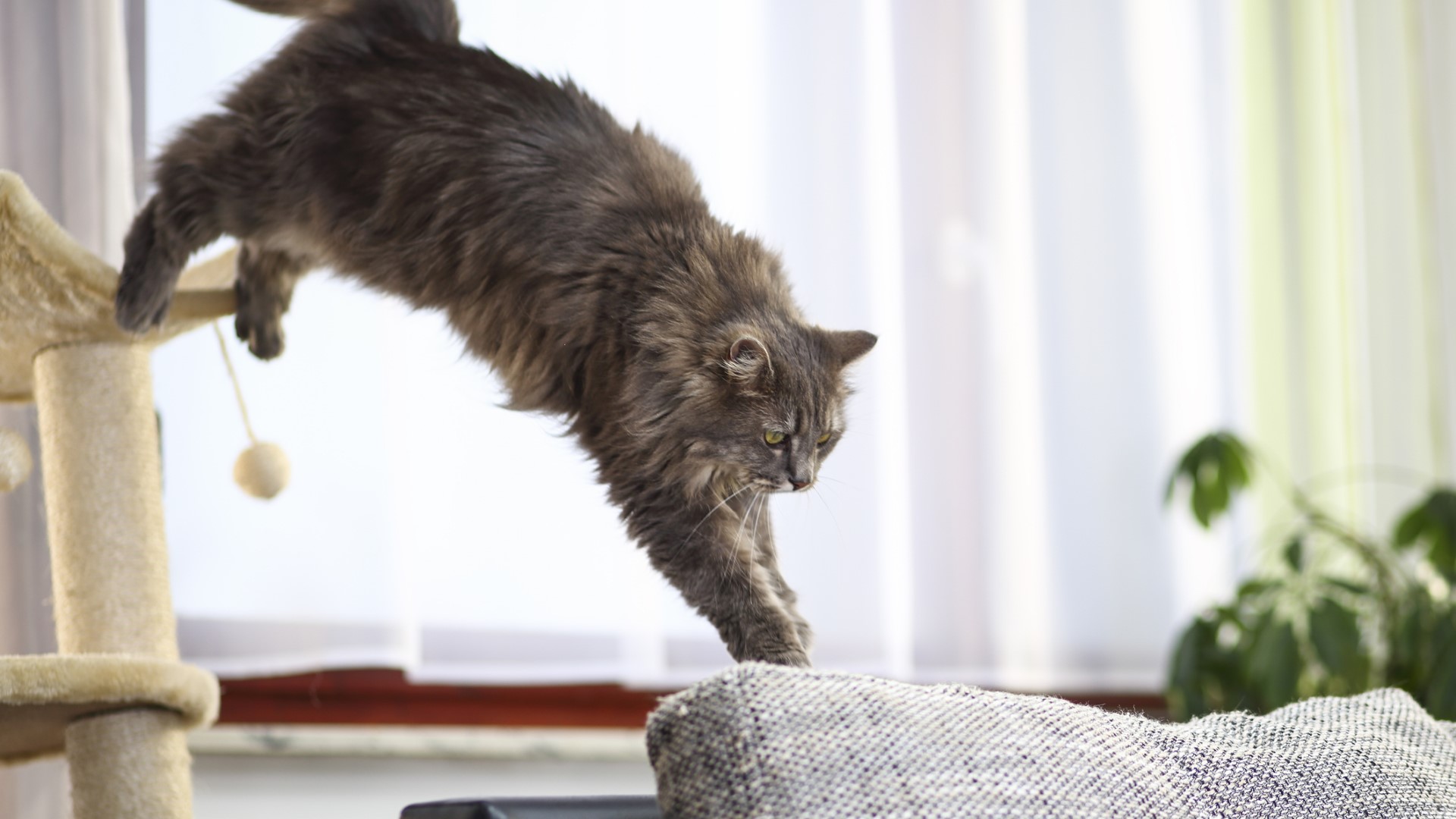
Large-breed cats can be prone to arthritic conditions, so ideally you'll want to prevent your cat from jumping down from high platforms or bookshelves. To minimize this, make sure to provide climbing platforms that gradually lead to the floor. You'll also want to watch out for this when they're kittens and are much more fragile.
If you've recently set up a climbing course for your cat, you can use a wand toy to entice them to follow the platforms up and down along the preferred route.
24. Socialize your large-breed cat with kids
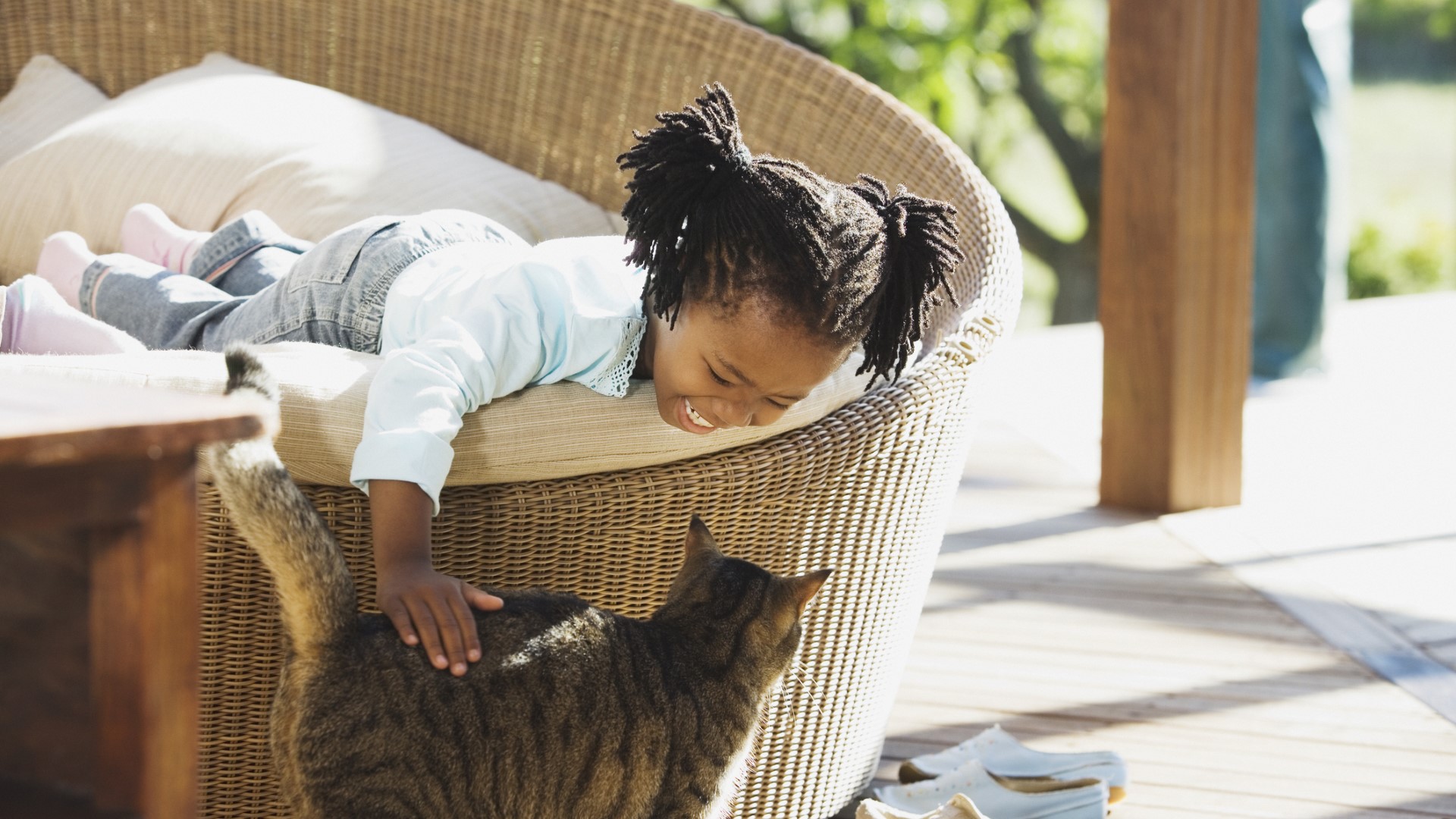
If you have young kids in the home, it’s a good idea to make sure your large-breed cat feels comfortable around children. Of course, you’ll need to teach your kids how to gently and respectfully interact with the kitty, as well as to ensure everyone’s safety and comfort. When first introducing cats and kids, make sure the environment is calm and quiet, and that the cat has an easy route to retreat to a safe space if they become stressed or overwhelmed.
25. Enjoy cool-weather activities together
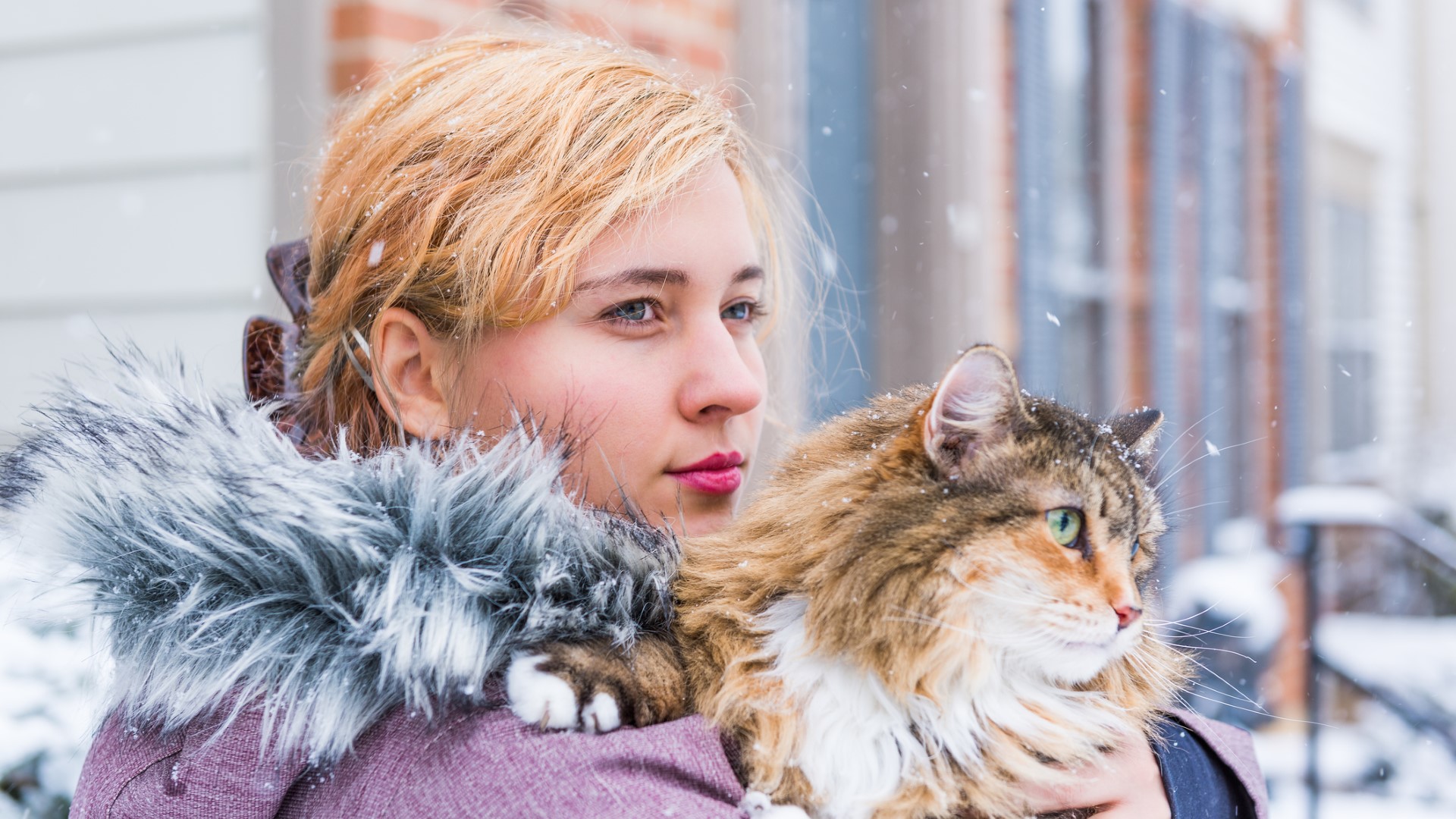
Many large-breed cats have dense fur and enjoy cool weather. If your big cat enjoys cooler temperatures, you can try taking them on an outdoor adventure. Some cats love to go on hikes or simply on a backyard adventure. You can enjoy the brisk weather together and play with some of their favorite cat toys, bat at the autumn leaves, go on a harnessed walk or tree-climbing adventure, and stalk bugs in the grass! Just make sure your cat feels safe and comfortable with whatever activity you’re doing together.
26. Prioritize bonding time
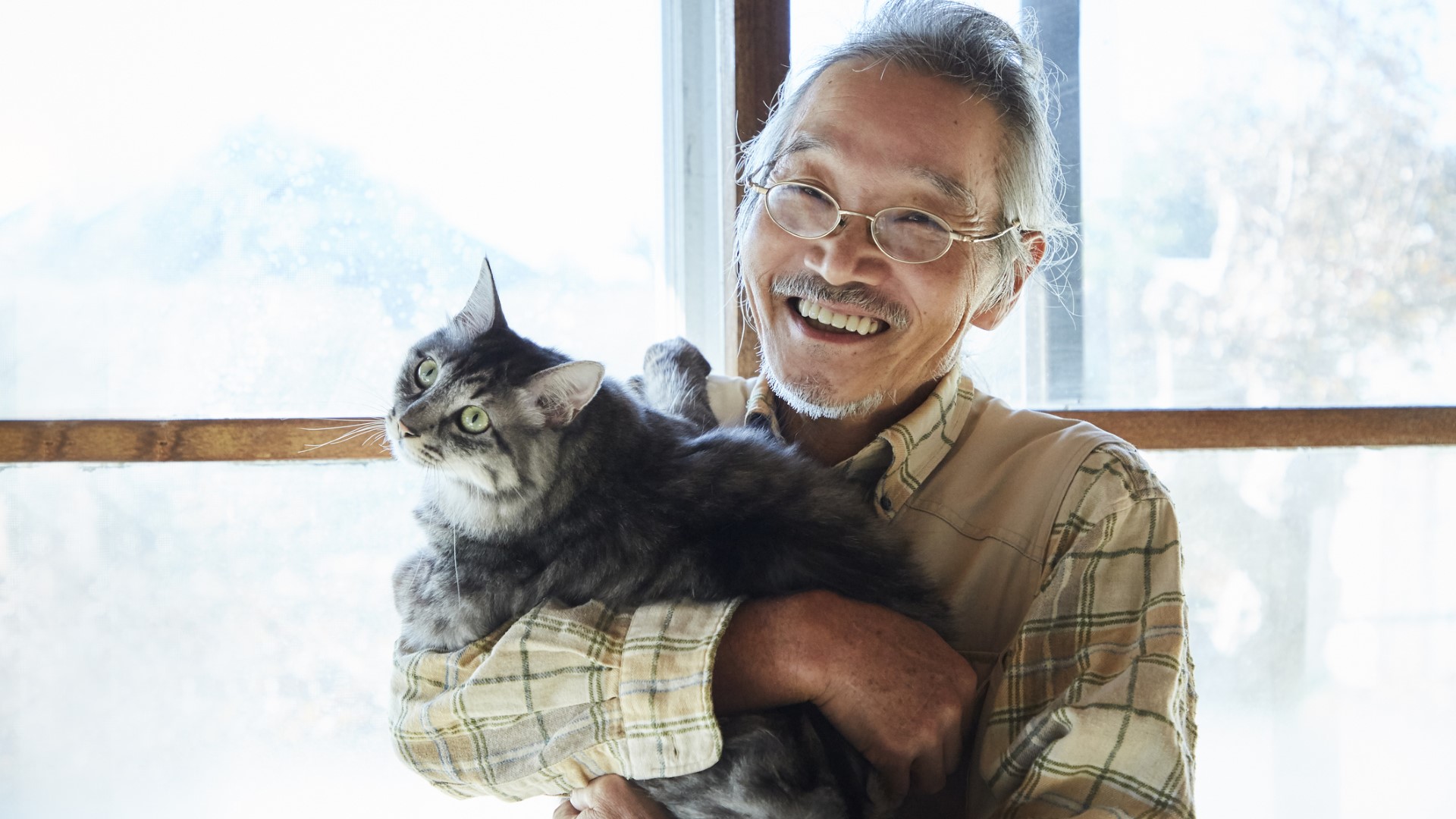
Bonding with your large-breed cat will help ensure a healthy and secure relationship, as well as increase your cat’s handleability and comfort with husbandry tasks, such as grooming.
Bonding will also help your kitty feel safe and relaxed in your home. Some large breeds, such as ragdoll cats, ragamuffins, and Maine coons, are known for their snuggly nature. These cats often act like lap dogs and will happily curl up for bonding time.
27. Teach kids respectful handling of your large-breed cat
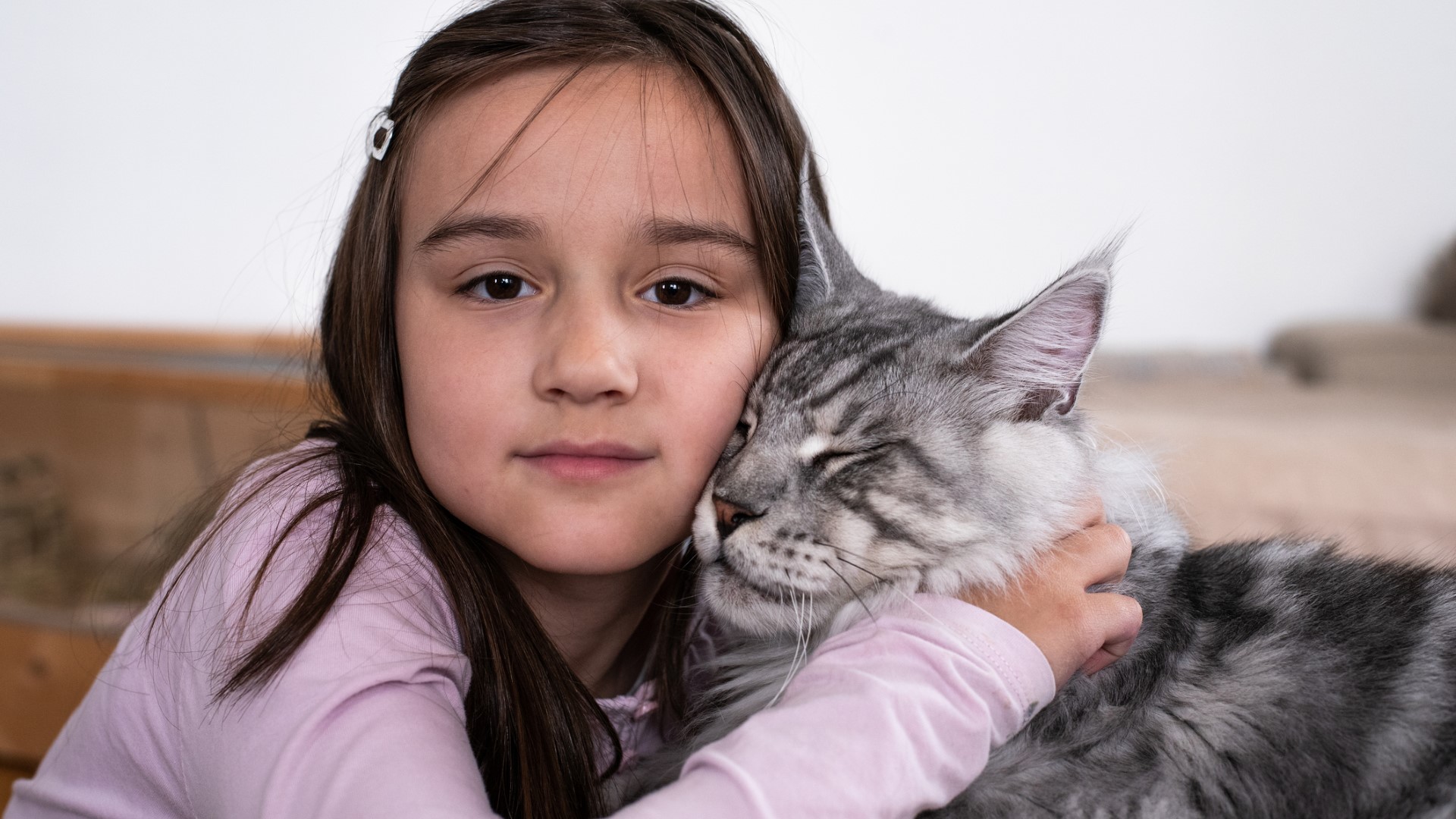
It’s essential to teach any kids in the home how to interact gently and respectfully with all pets, including your large-breed cat. This will support the safety and comfort of both the children and pets. It’s a great idea to explain signs of discomfort from your pets so your children can understand when to stop doing something or give the animal space.
Small kids can also have a hard time holding large cats, and may accidentally uncomfortably hold them. Make sure to teach your kiddo how to safely hold a cat, and explain to them why they might not be big enough yet to hold large cats. Supervise all interactions with young children and cats to ensure gentle interactions.
28. Vaccinate them
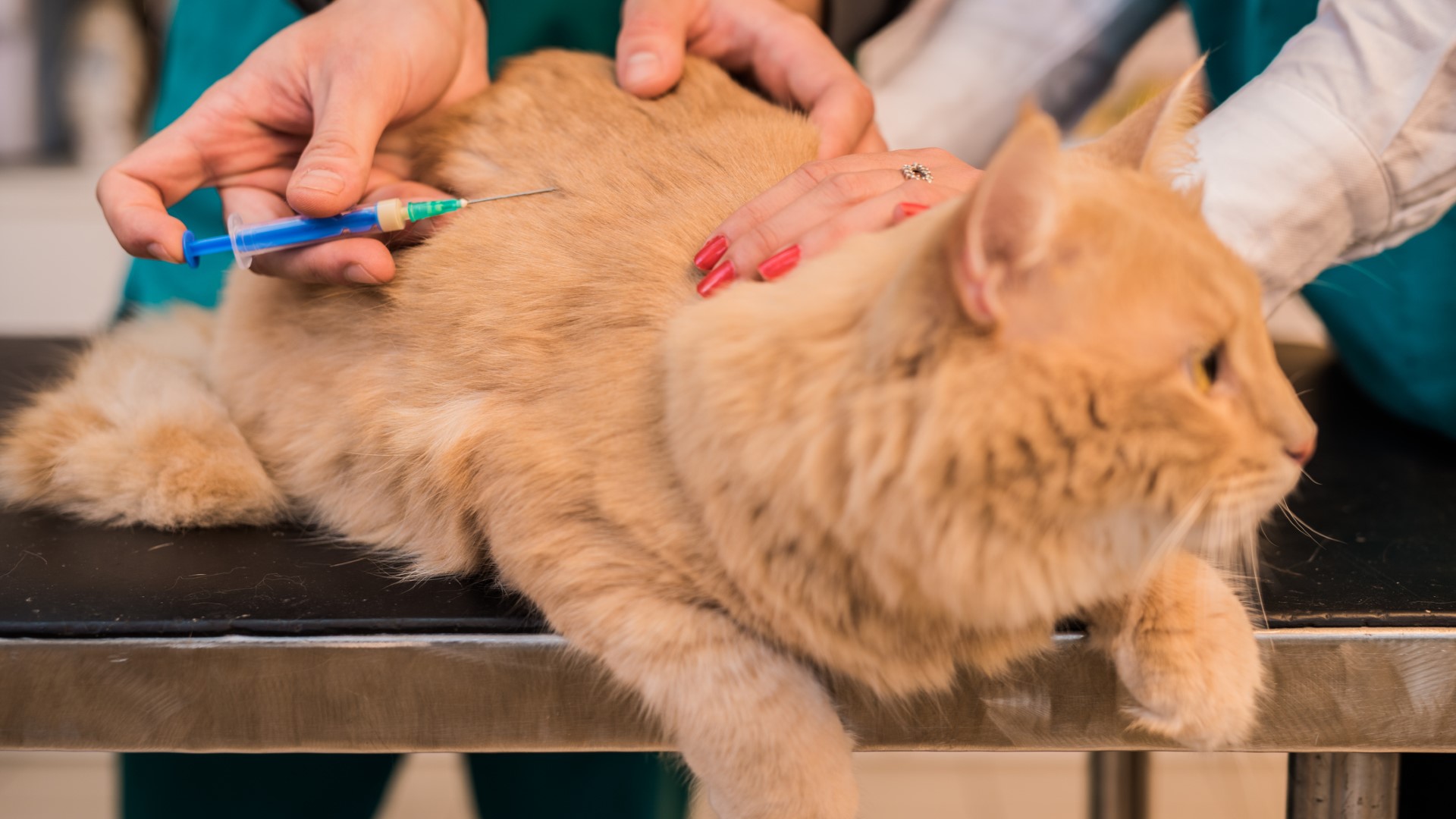
Like all pets, large-breed cats have certain vaccinations they need throughout their lives. During kittenhood, they should receive several rounds of vaccines to support their health as their immune system develops. The core vaccines your vet will give to a kitten protect against feline distemper (panleukopenia), feline viral rhinotracheitis, feline calicivirus, and rabies. As an adult, your cat will typically need a vaccine every one to three years, depending on their environment.
29. Stock up on treats, but give in moderation
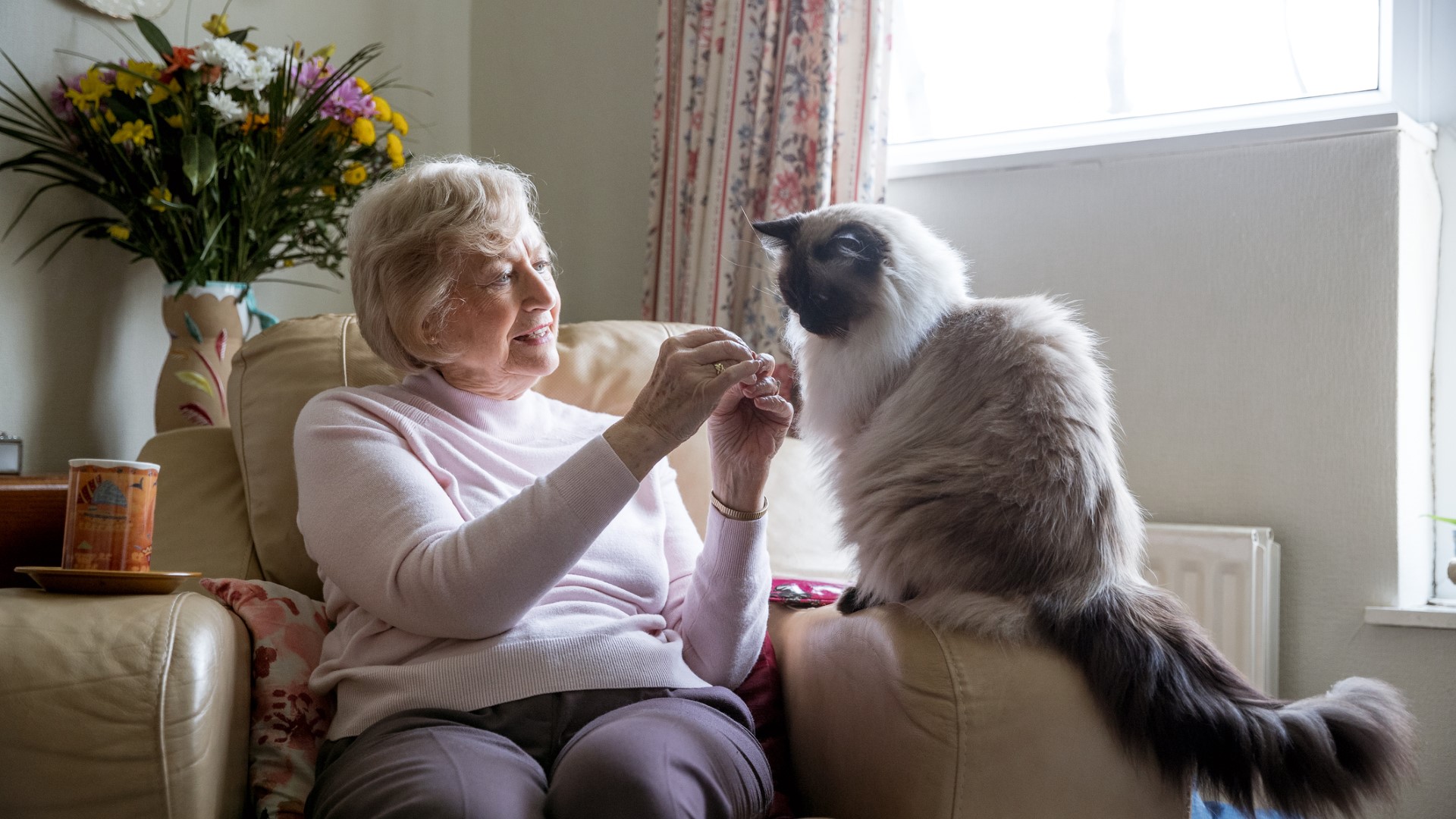
Stocking up on delicious treats is a great idea for positive reinforcement training and bonding. However, you may not notice that your large breed is gaining too much weight, especially if they have a thick and long coat. So, make sure to feed treats in moderation. When training, you can break or chop up treats into very small pieces. This allows you to consistently and frequently reward your large-breed cat while not overfeeding them.
30. Use visual enrichment
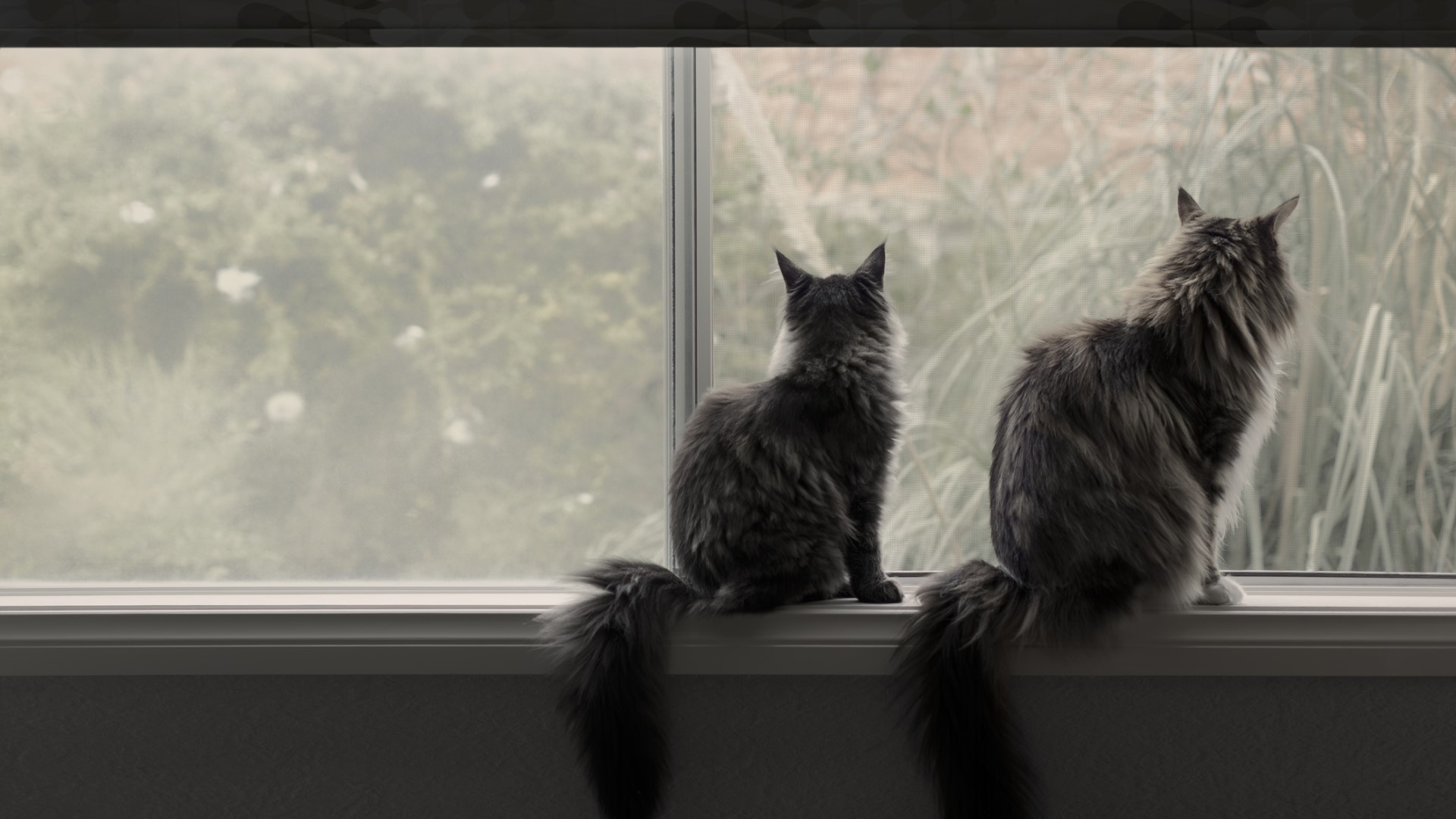
Many cats love window-watching and other forms of visual enrichment. Your large-breed cat may enjoy watching birds and squirrels from a window perch, as well as tuning into cat TV. Leaving shows on that are designed to entertain cats while you're away is a great way to ensure your big cat remains happy and enriched when you're not home. Perpetual motion toys and cat mobiles are other great choices to keep your large-breed cat entertained any time of the day.
31. Establish a routine
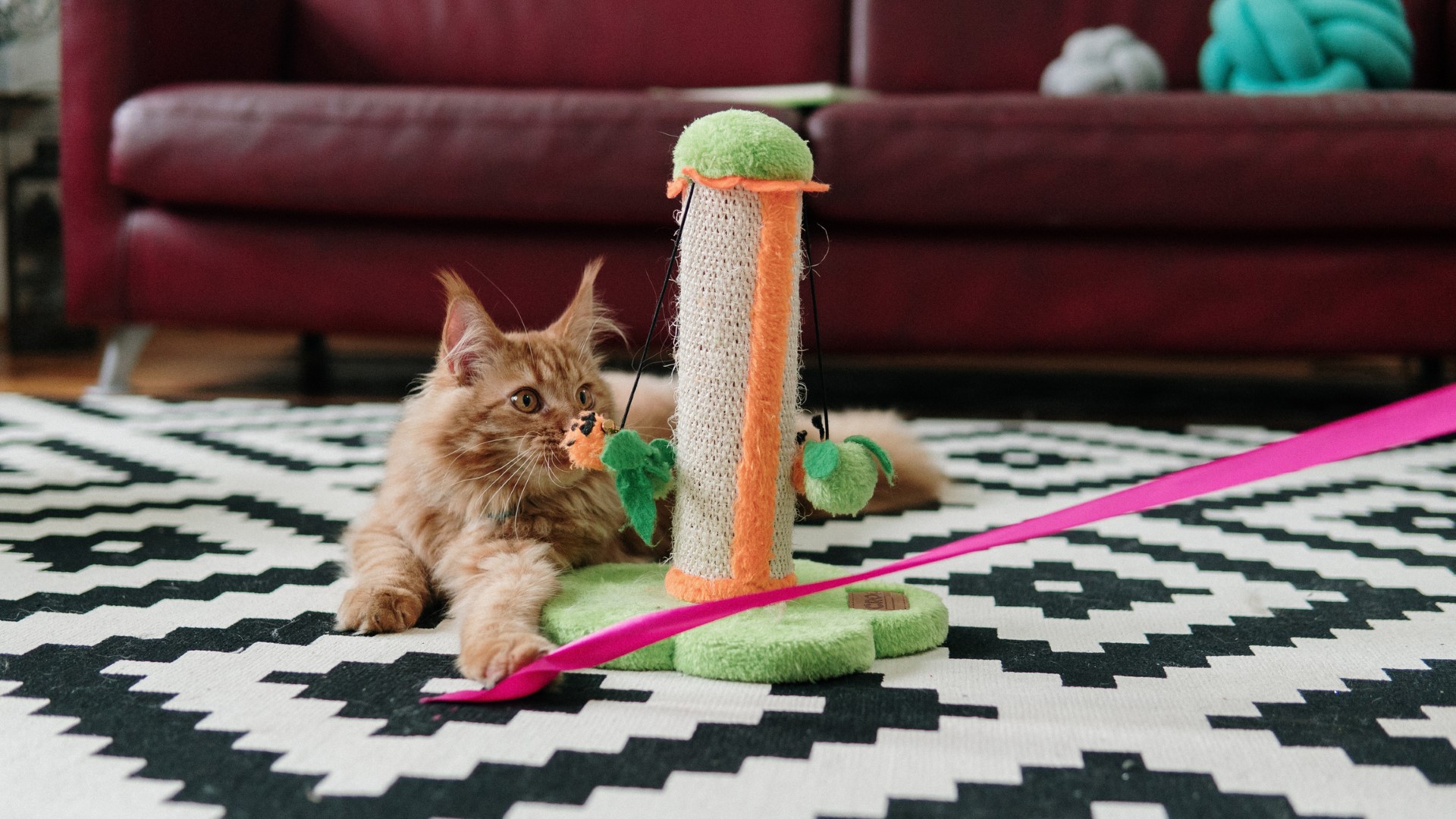
Cats can adjust to sleep during the night or day, so it's useful to establish a consistent routine with your large breed so they're less likely to romp around the house at all hours of the night. Regular feeding times, scheduled exercise and play, and using puzzles and interactive feeders can all help your cat settle at night. By providing lots of enrichment during the day, your cat is more likely to sleep when
you're asleep, instead of pouncing on your face.
32. Be your large-breed cat's advocate
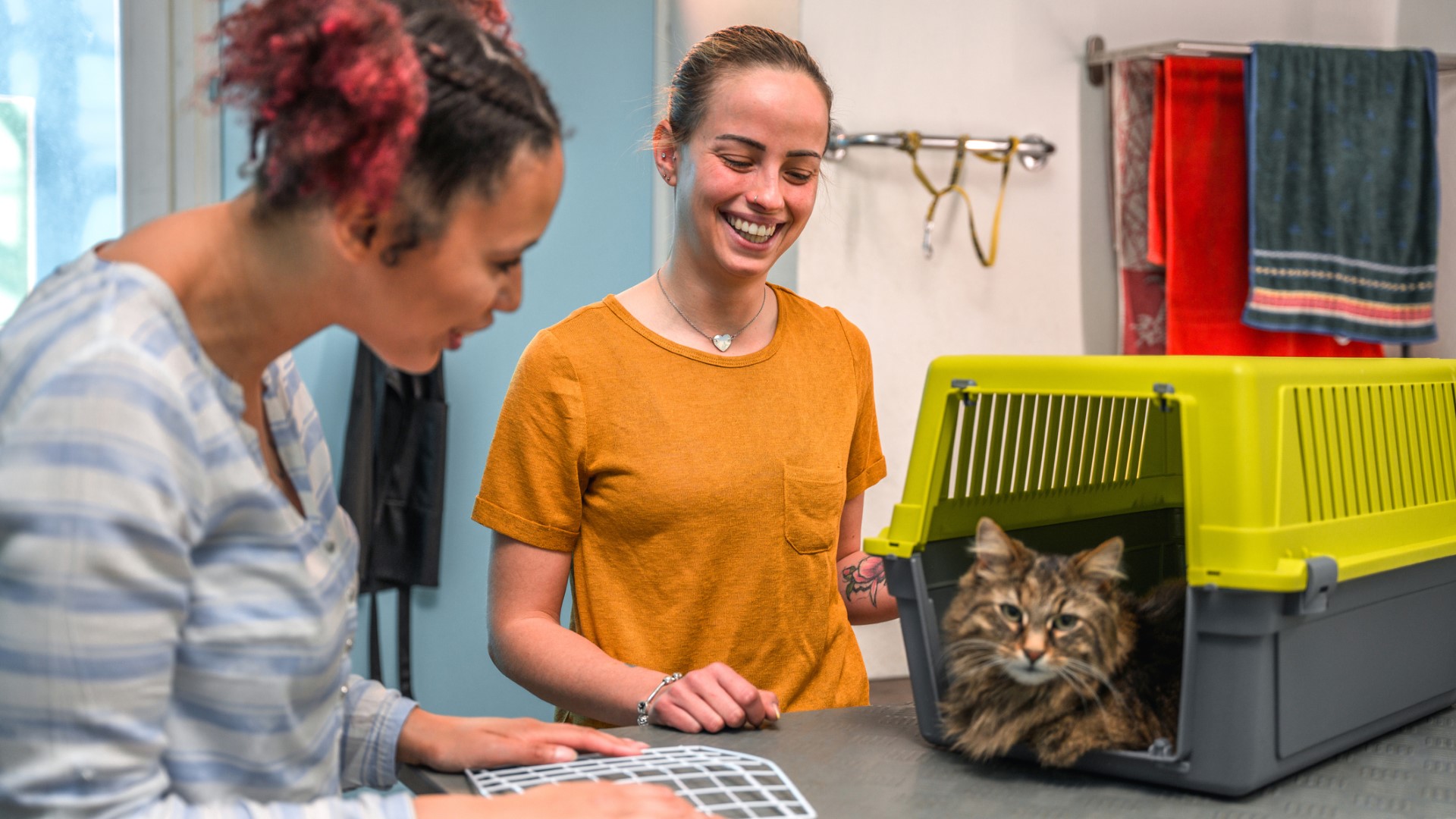
Large-breed cats are a lovely sight, and your house guests or strangers out in public may want to immediately come up and pet them. If your cat is shy, it's important to be their advocate and set boundaries that will help your kitty feel safe and secure. By ensuring your cat is treated and handled in a way that supports their comfort, they are more likely to improve their socialization skills and willingness to engage with unfamiliar people.
Cammi is a freelance writer with over 5 years of experience specializing in creating accessible and engaging pet, wildlife, and mycology content. She’s passionate about sharing accurate, ethical, and animal welfare-centered writing that fosters understanding, curiosity, and compassion for our pets and the natural world. She lives off-grid in a self-built cabin with a rambunctious pack of rescue and foster dogs. In her spare time, Cammi enjoys volunteering with animal shelters, foraging for mushrooms, playing viola and guitar, and traveling.
